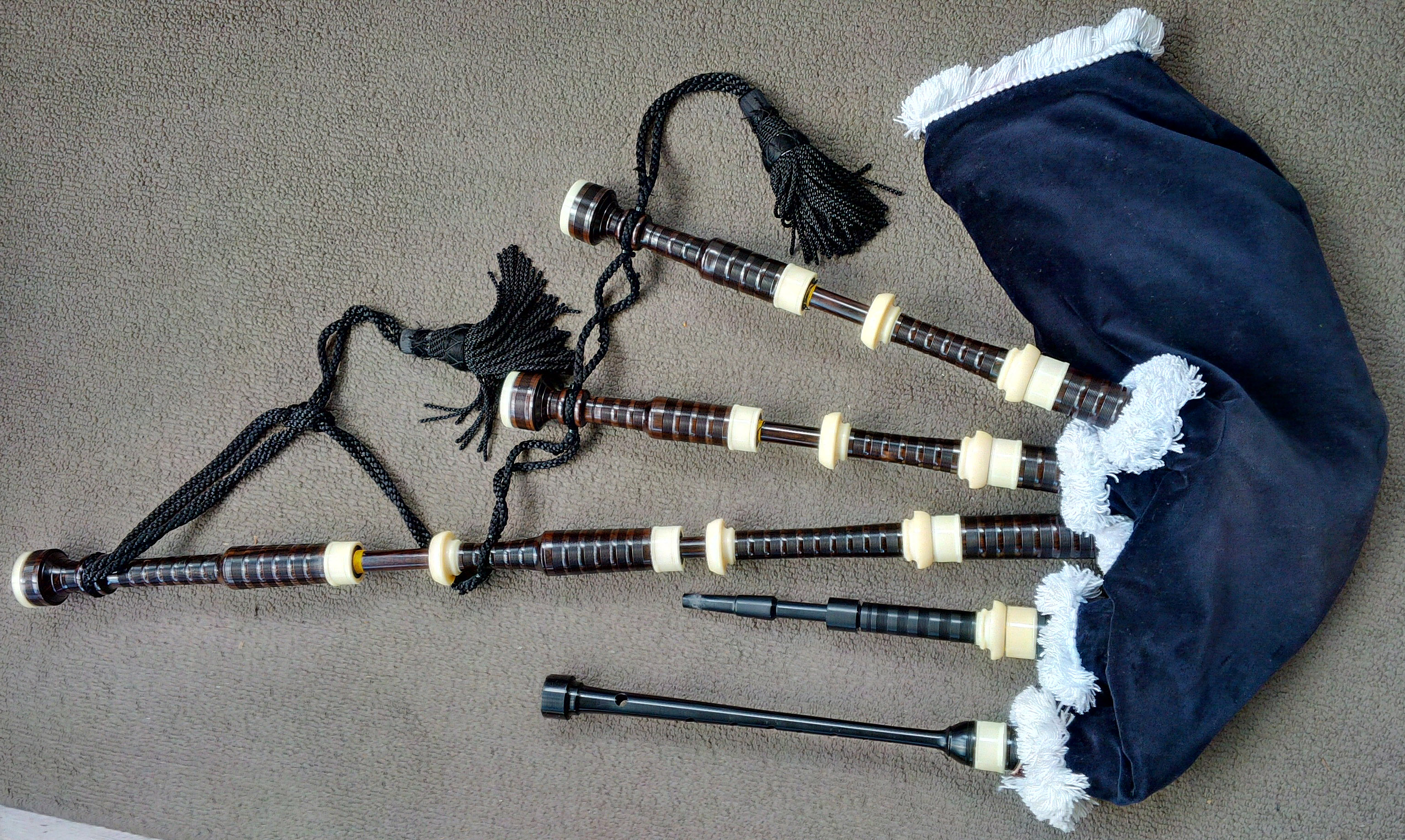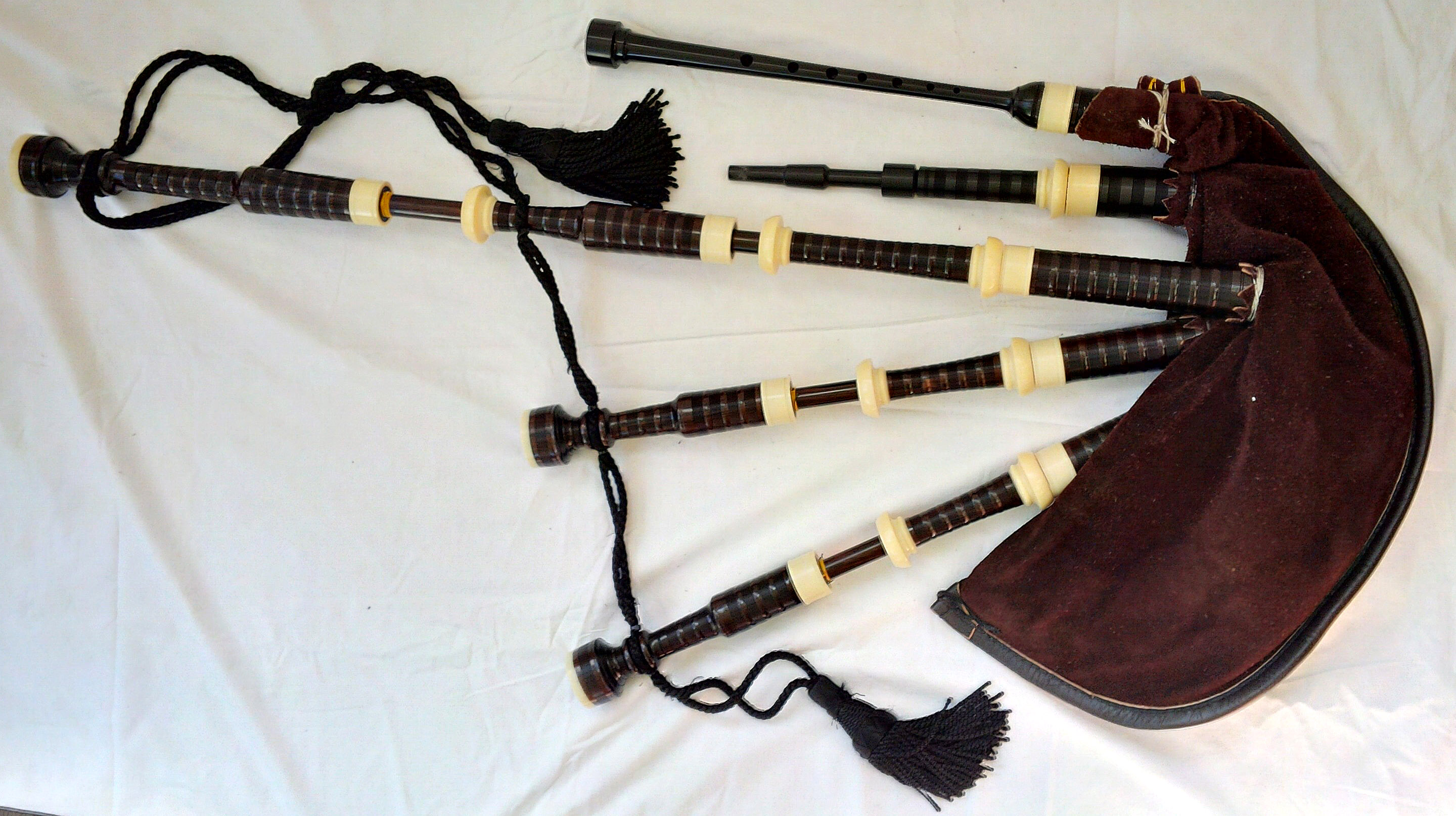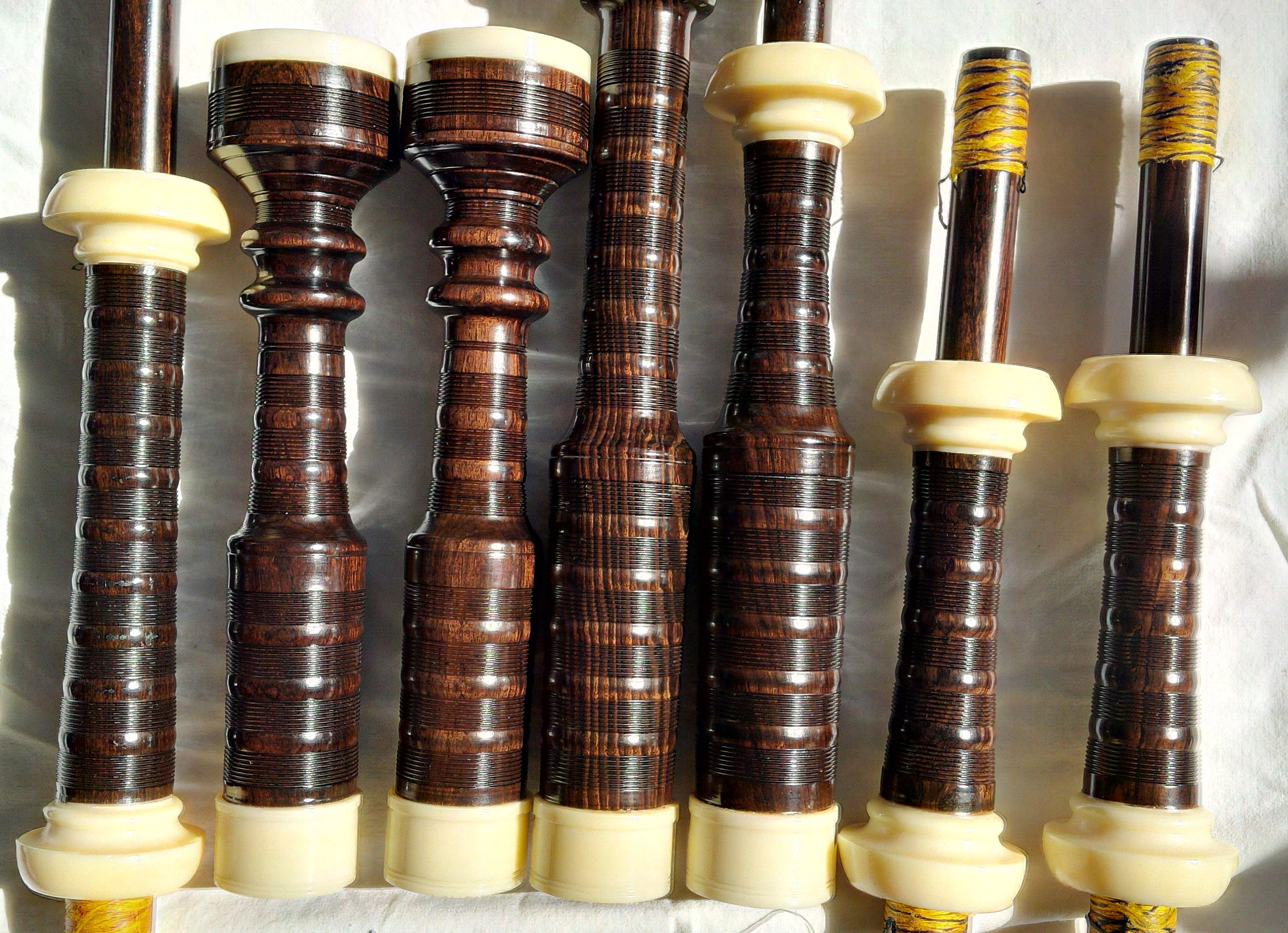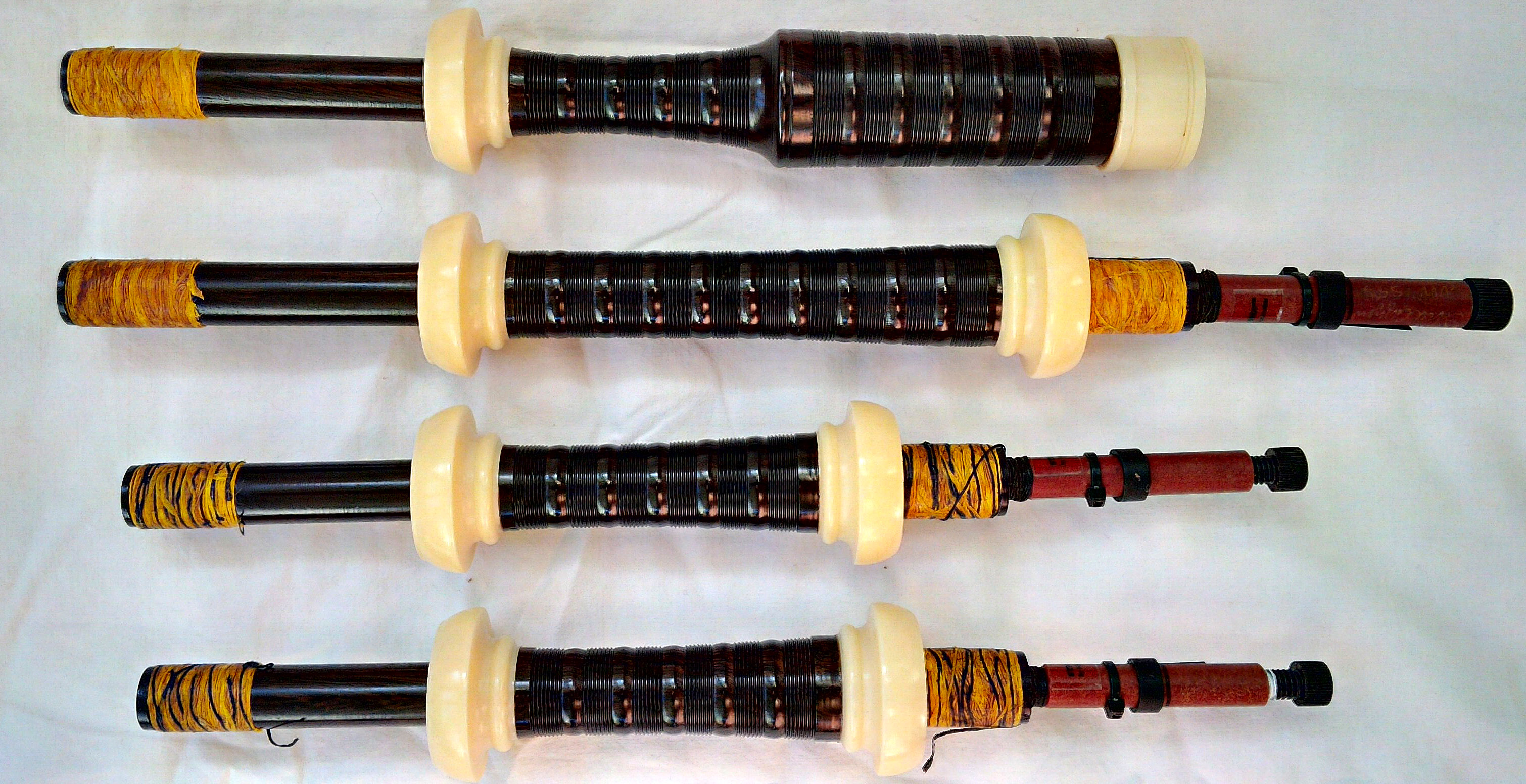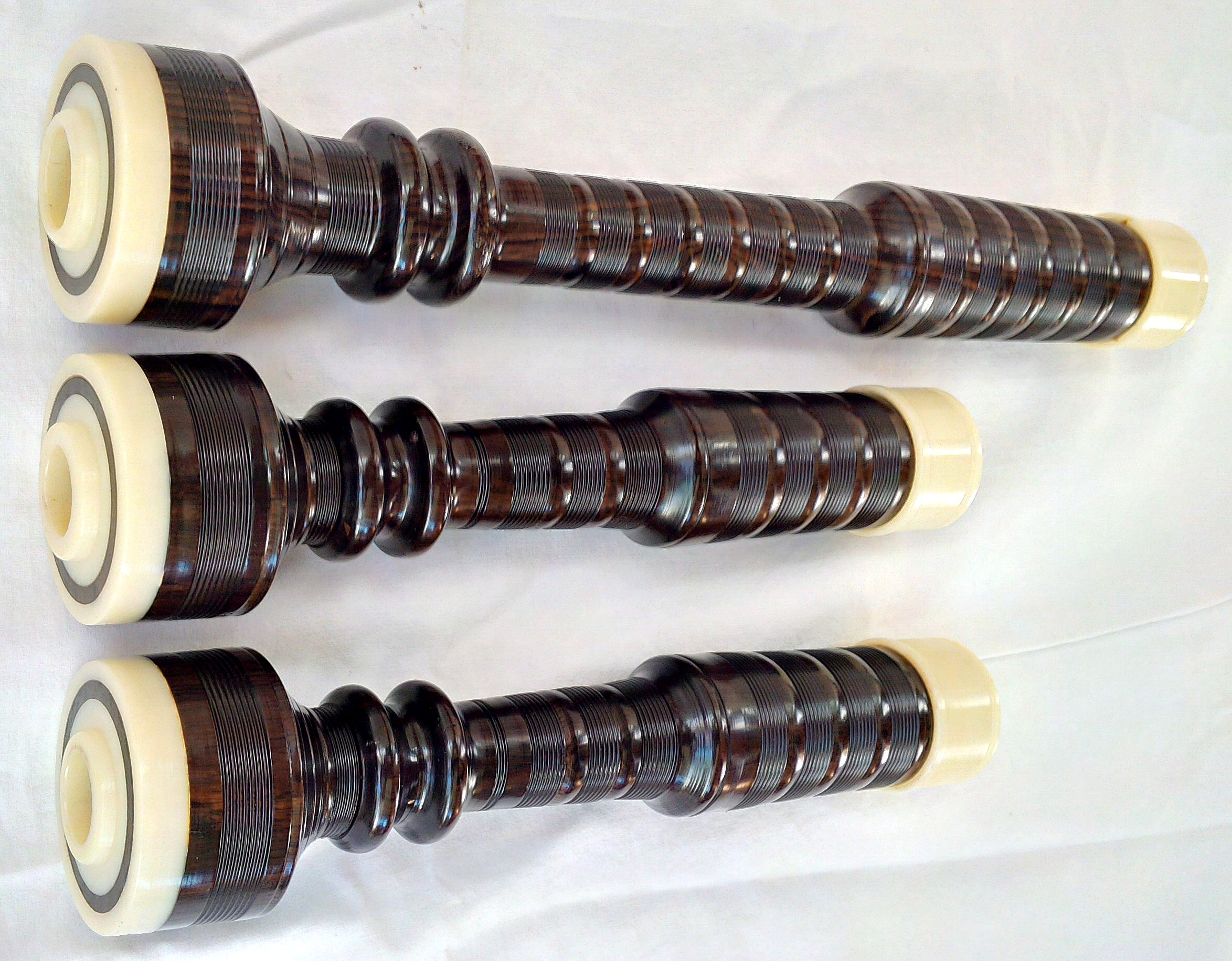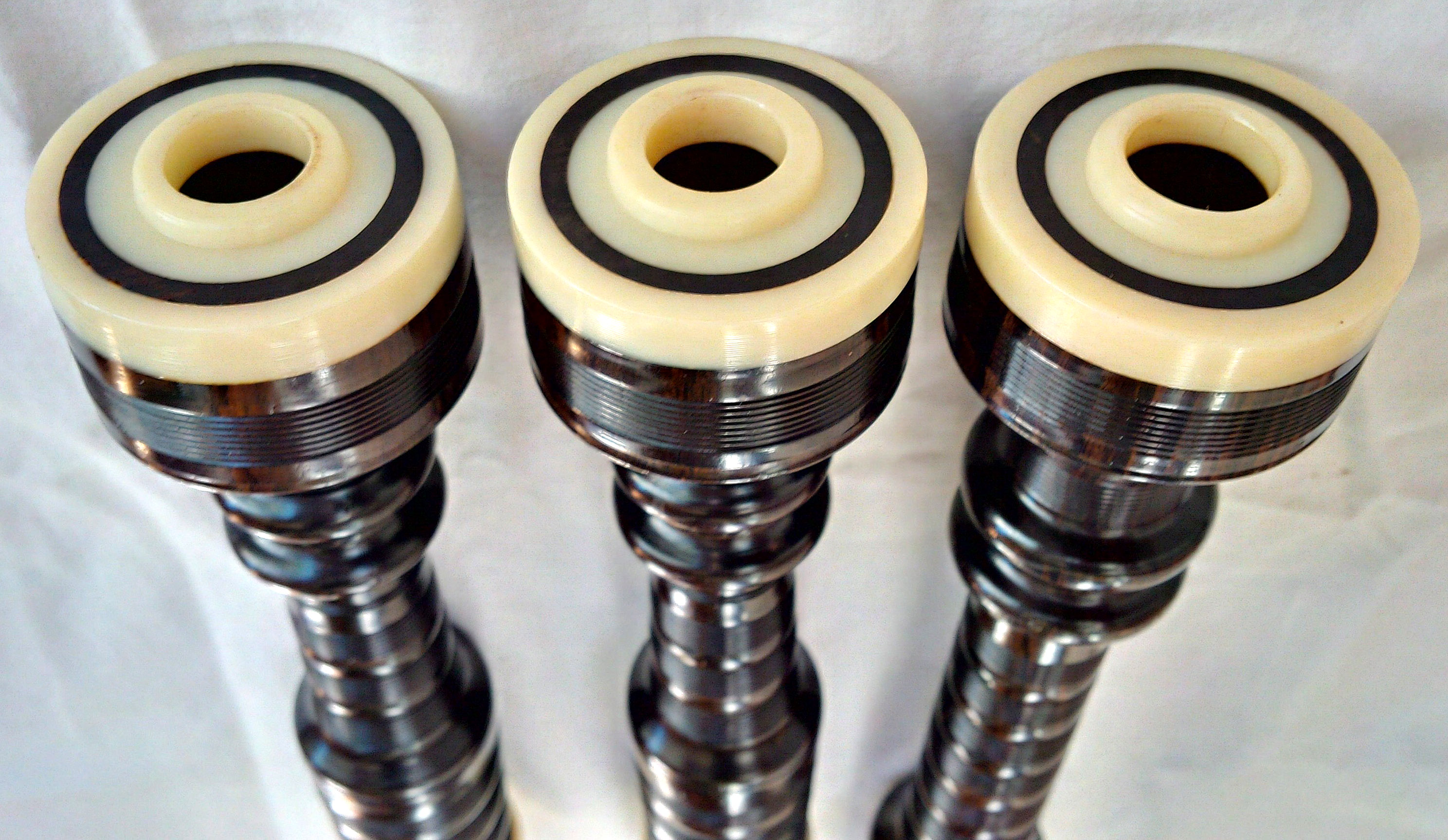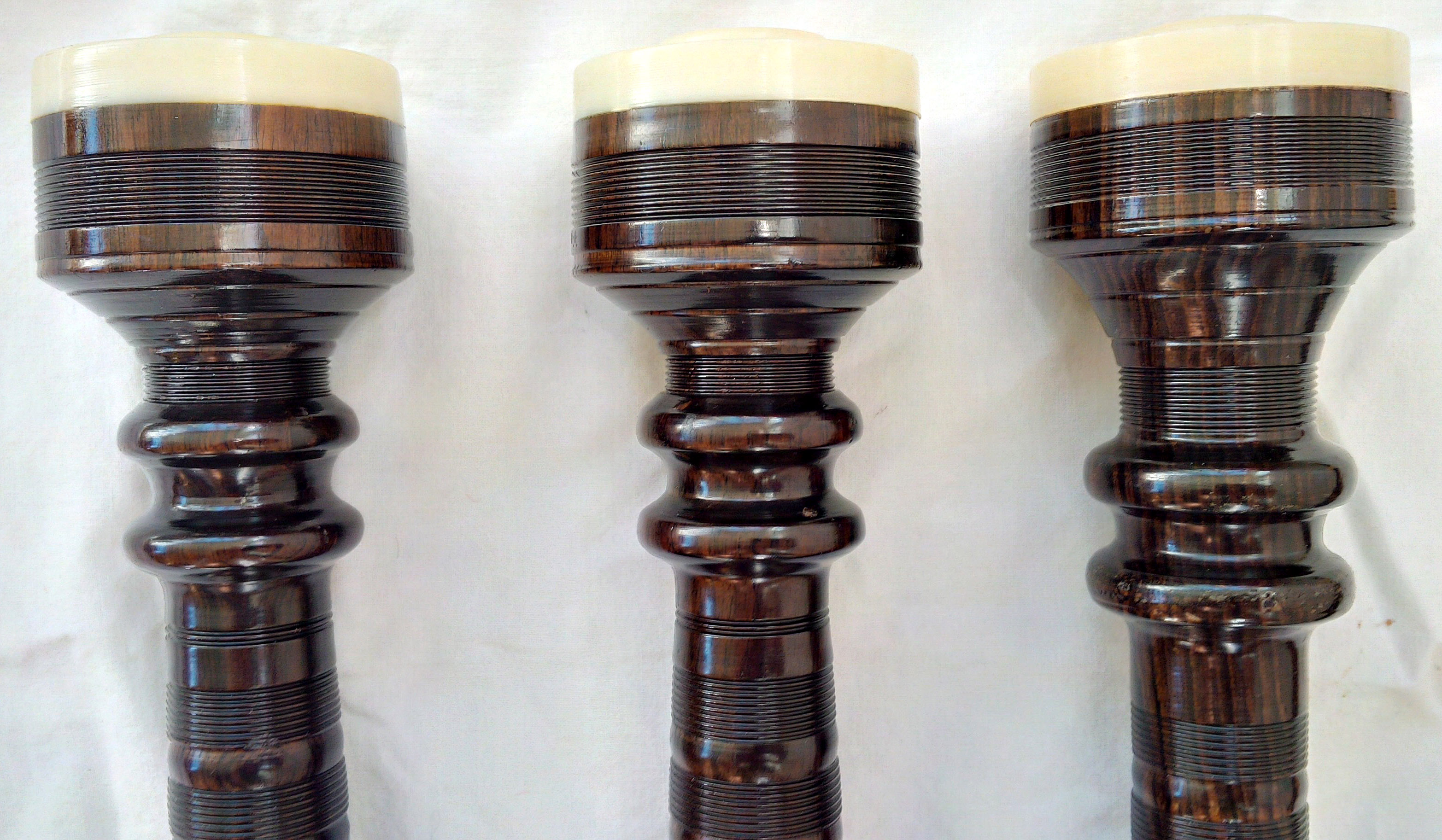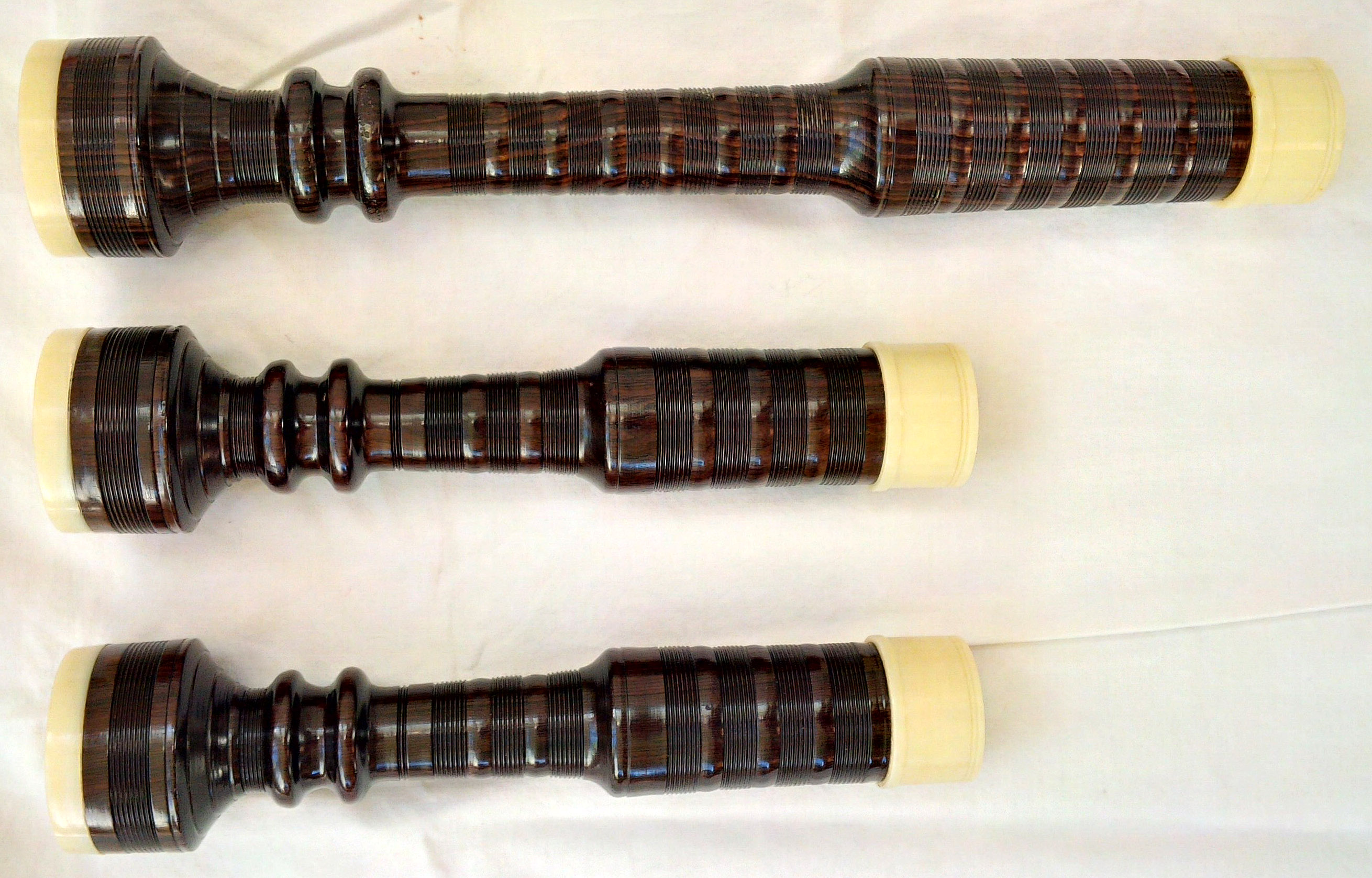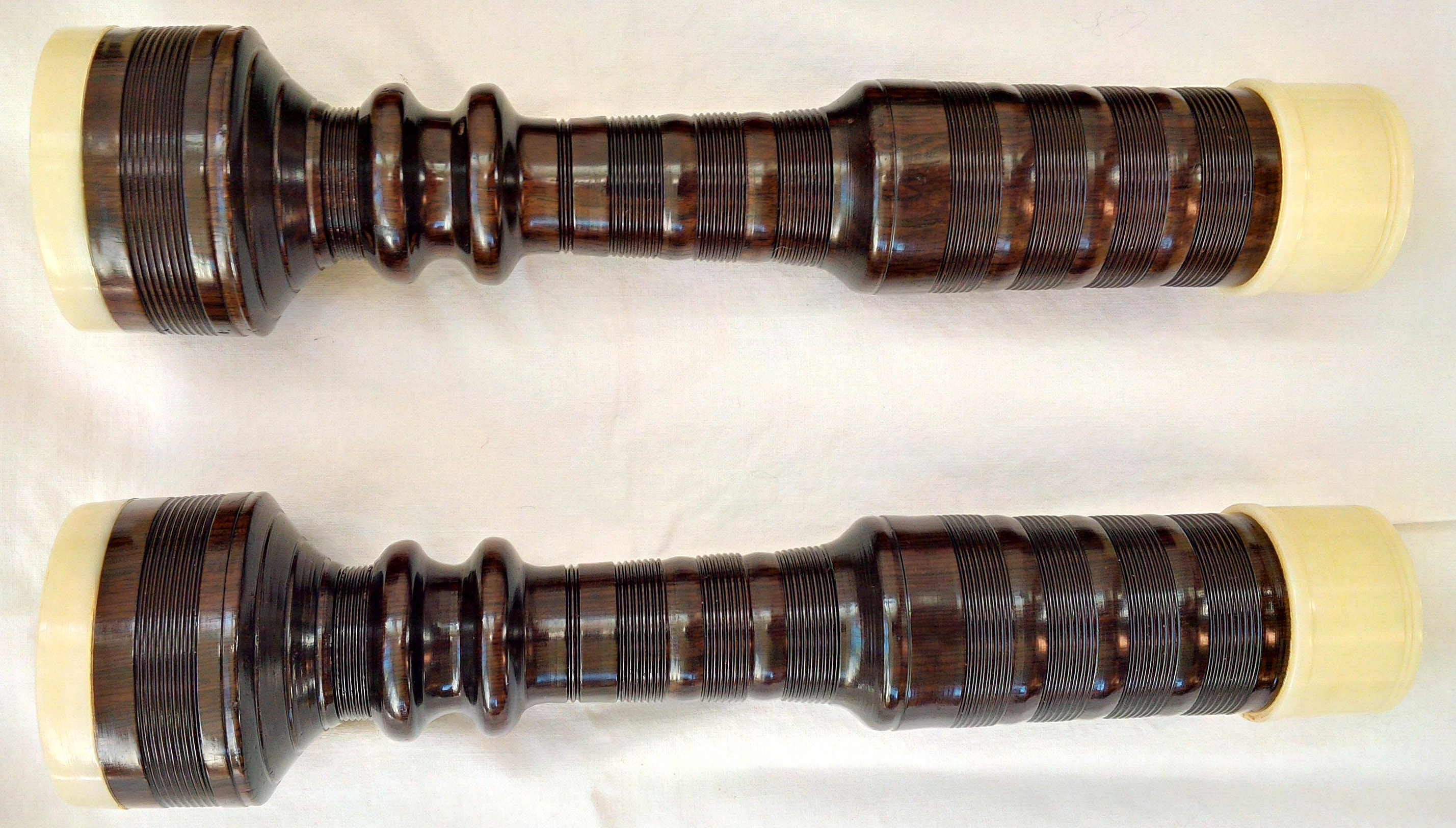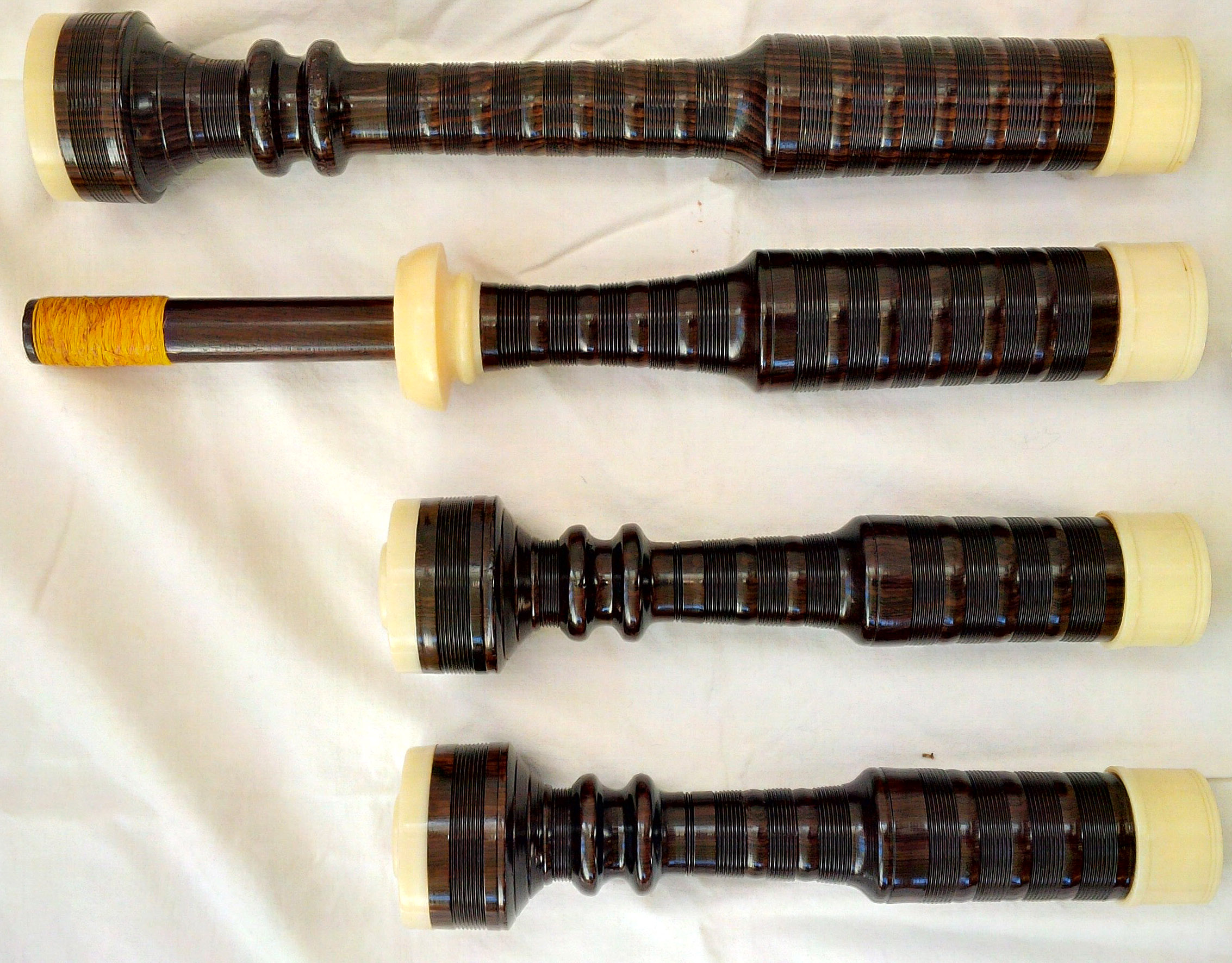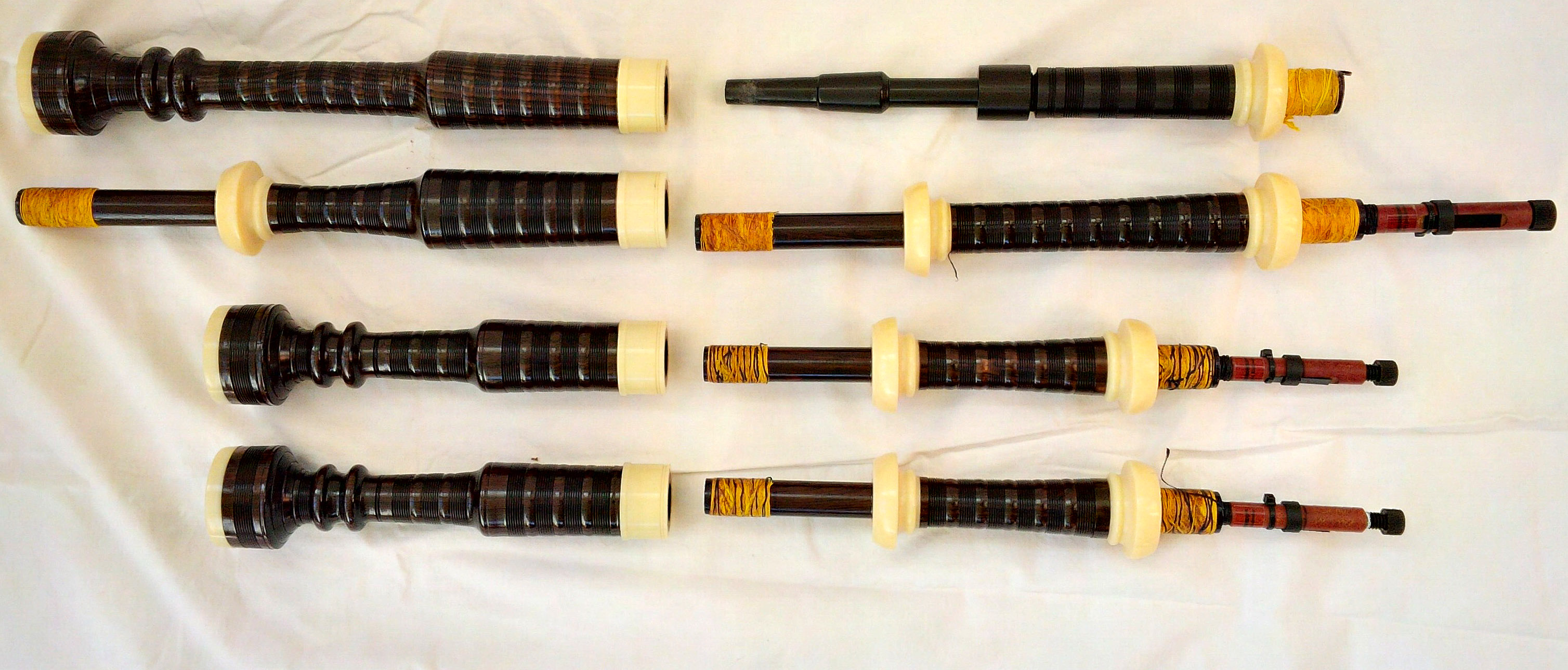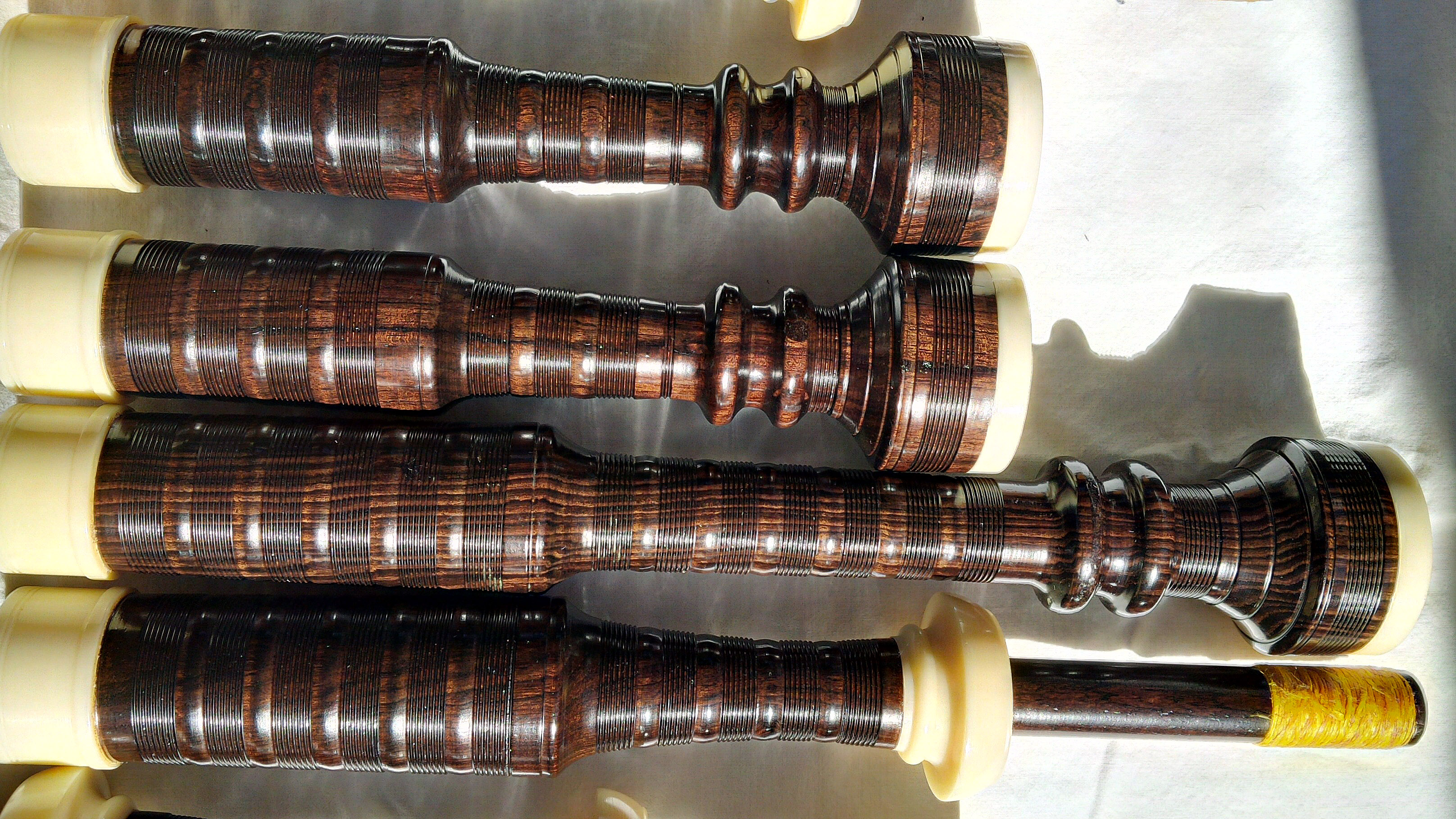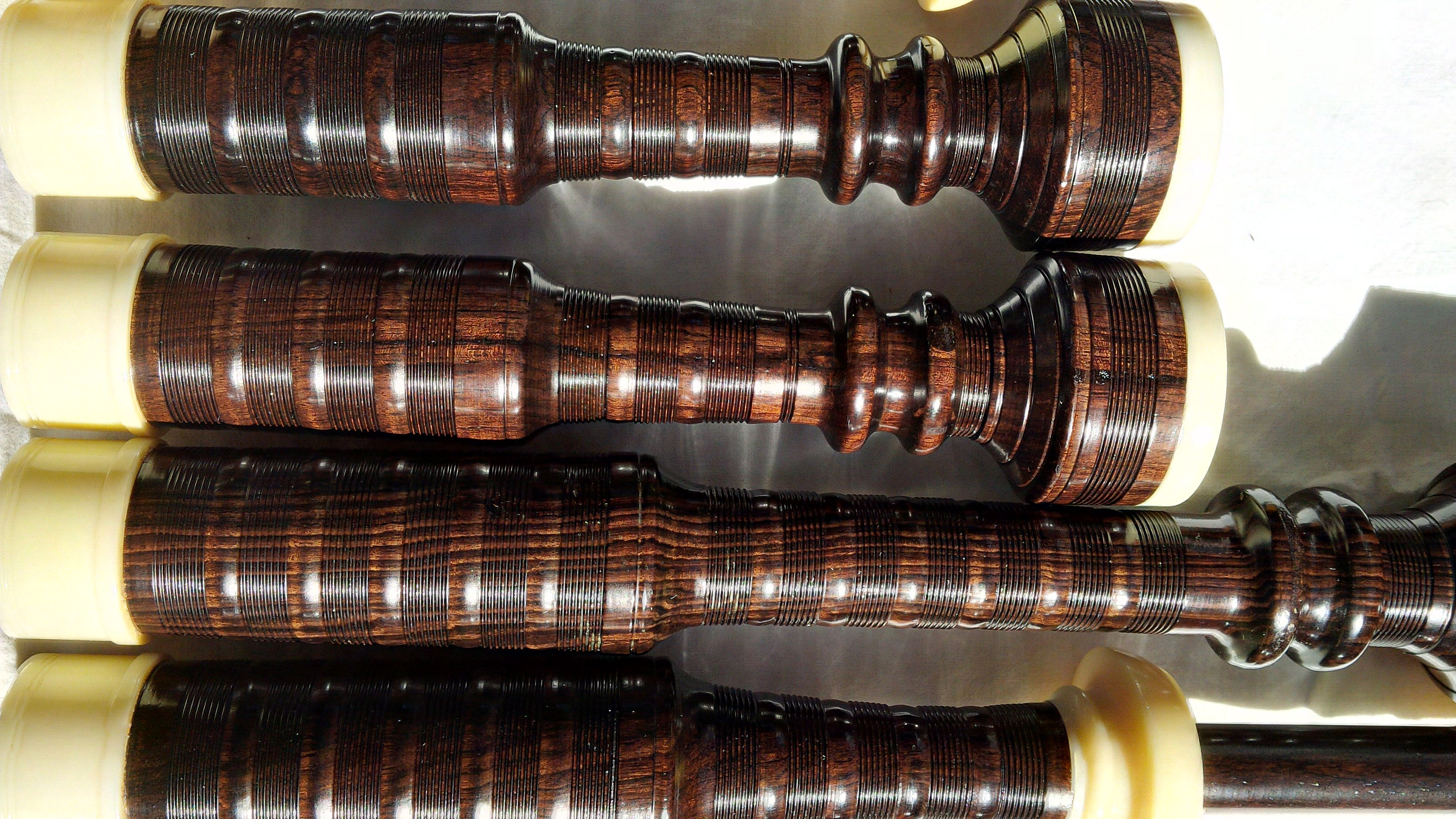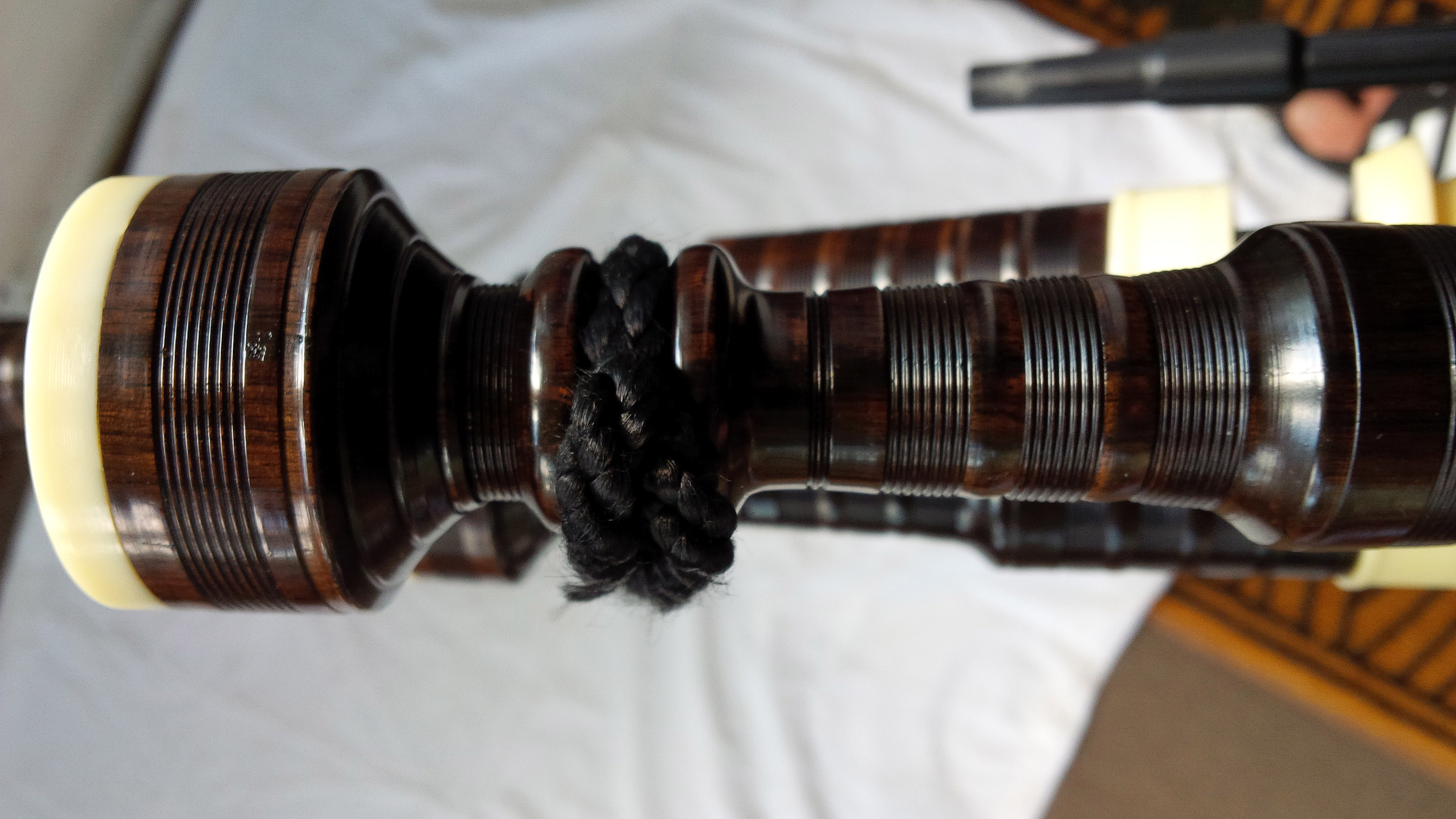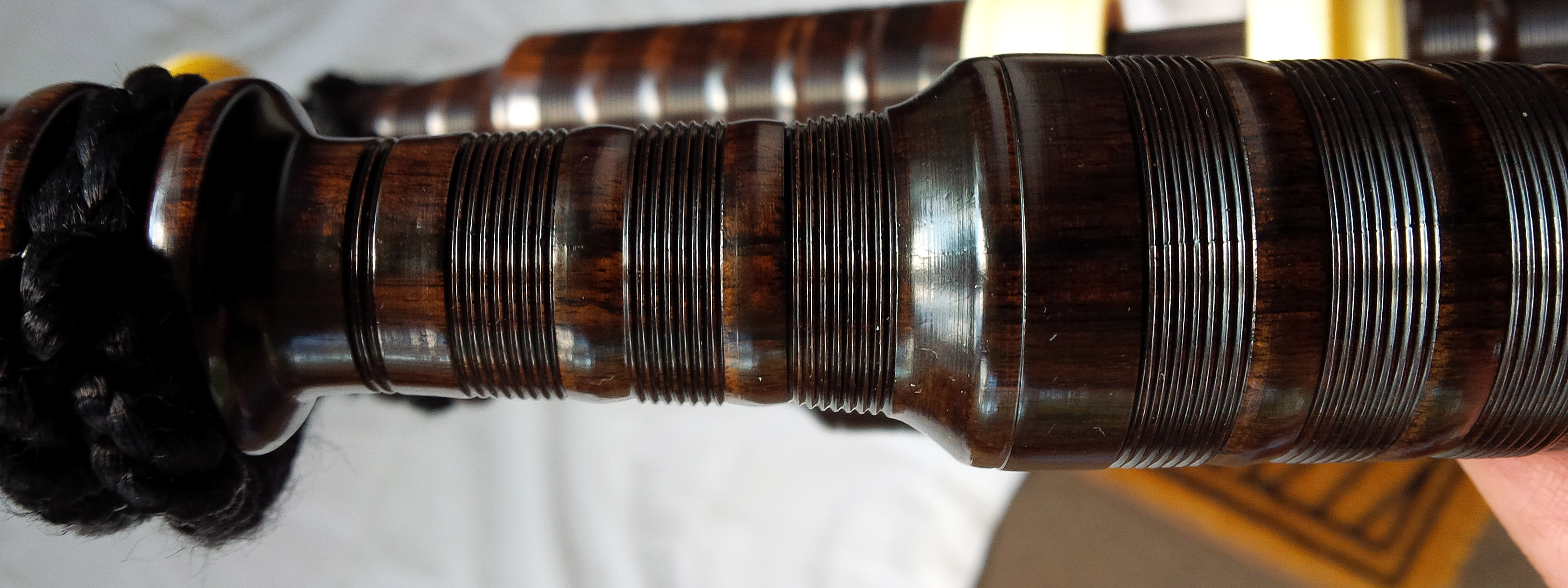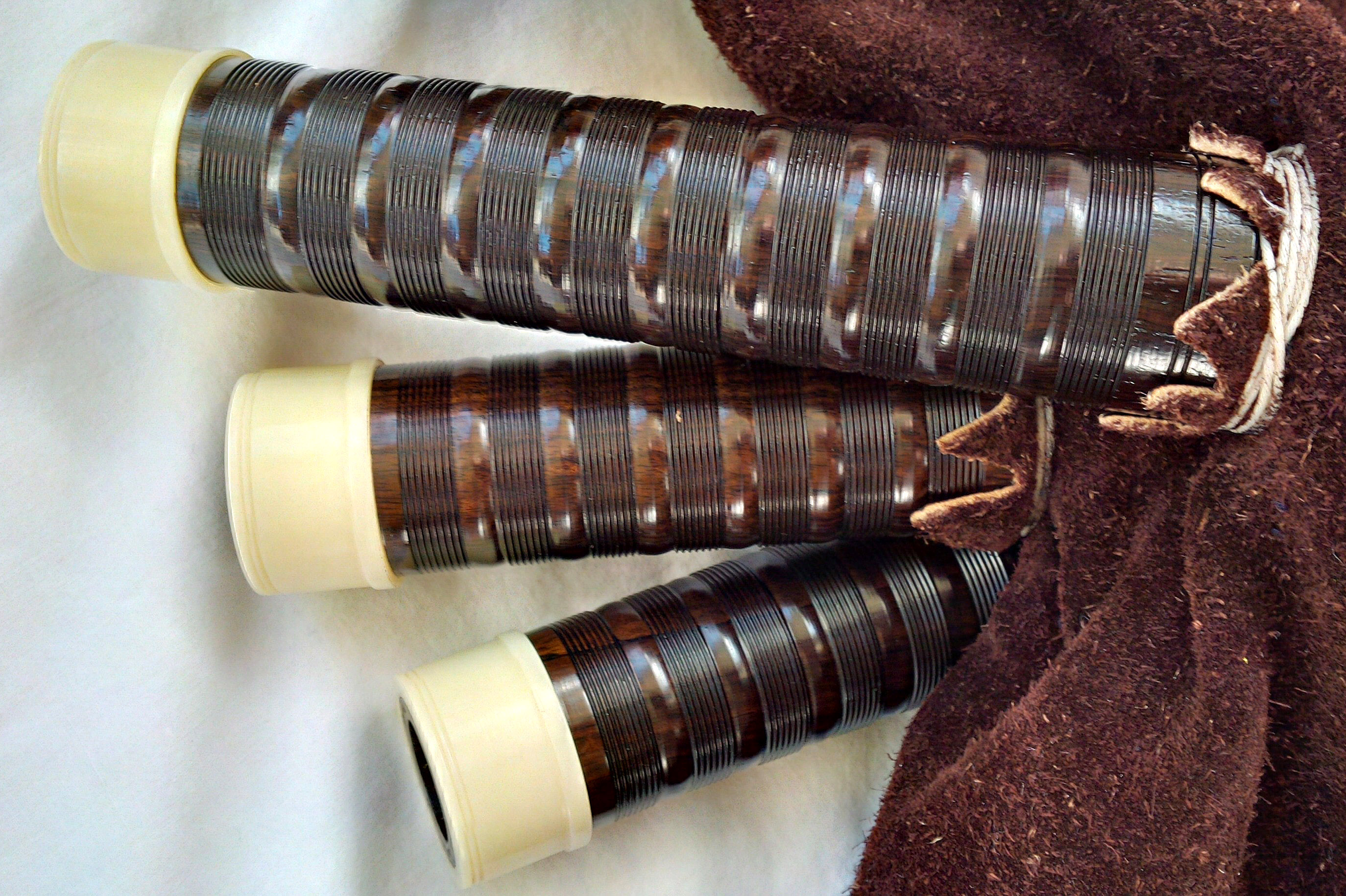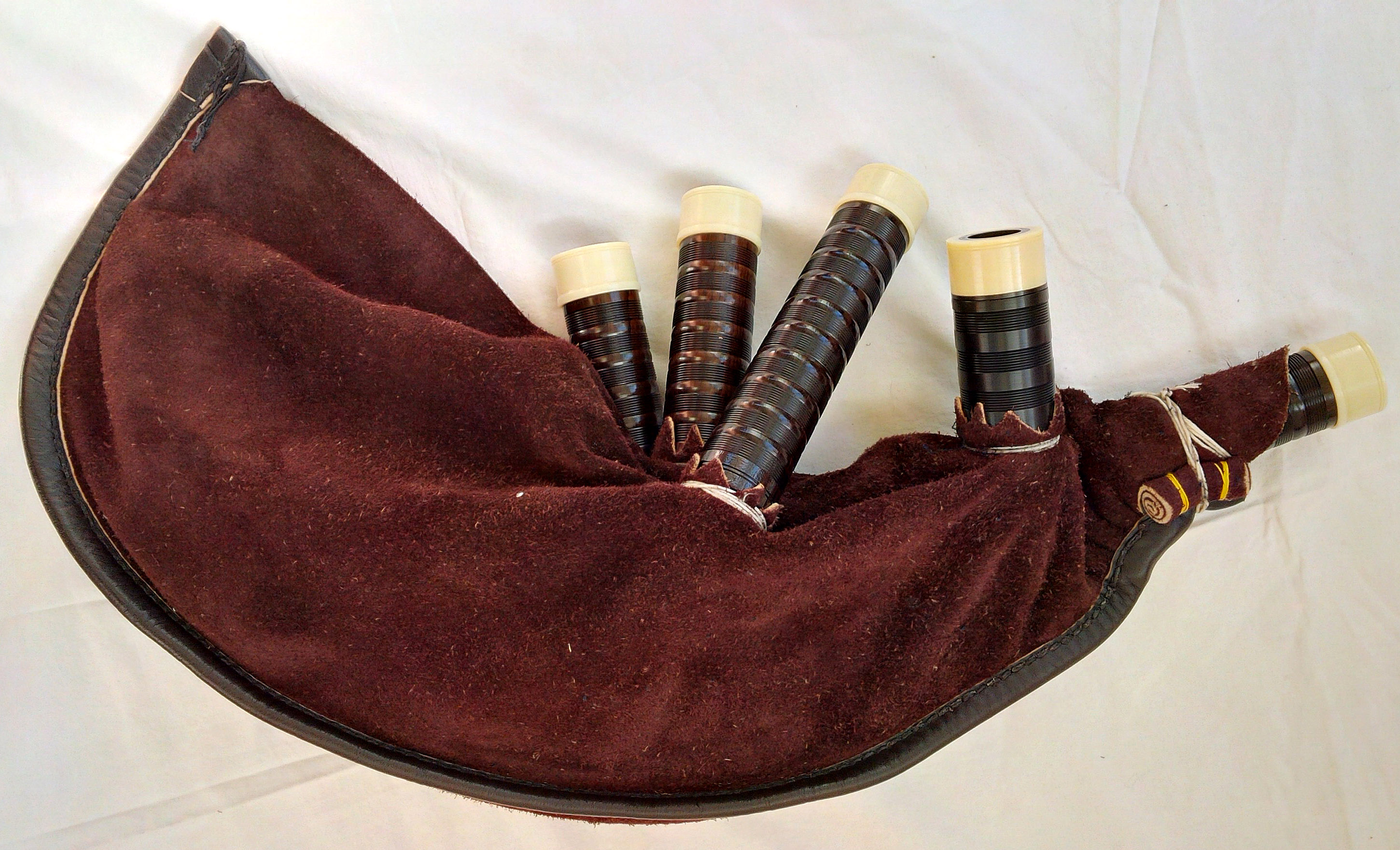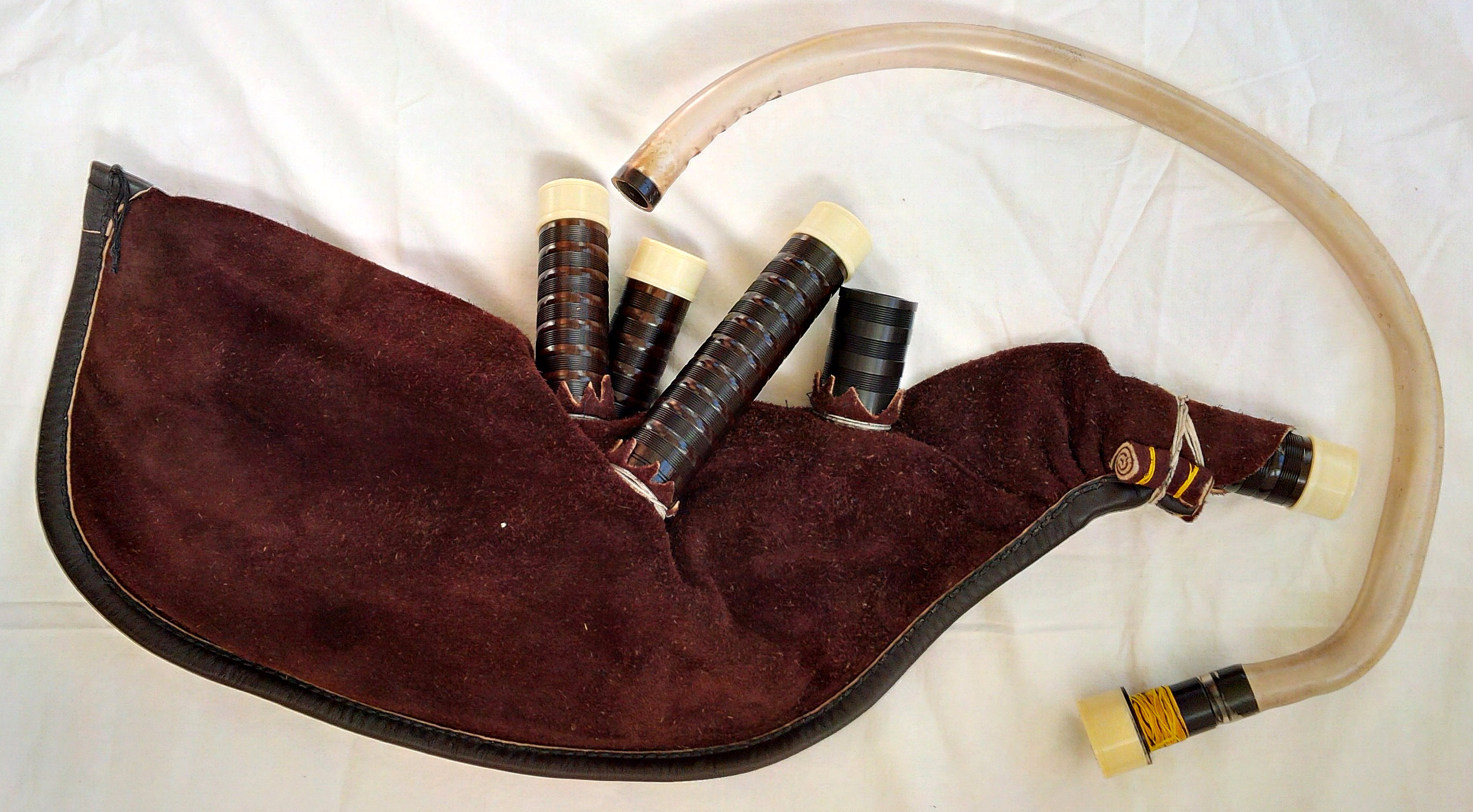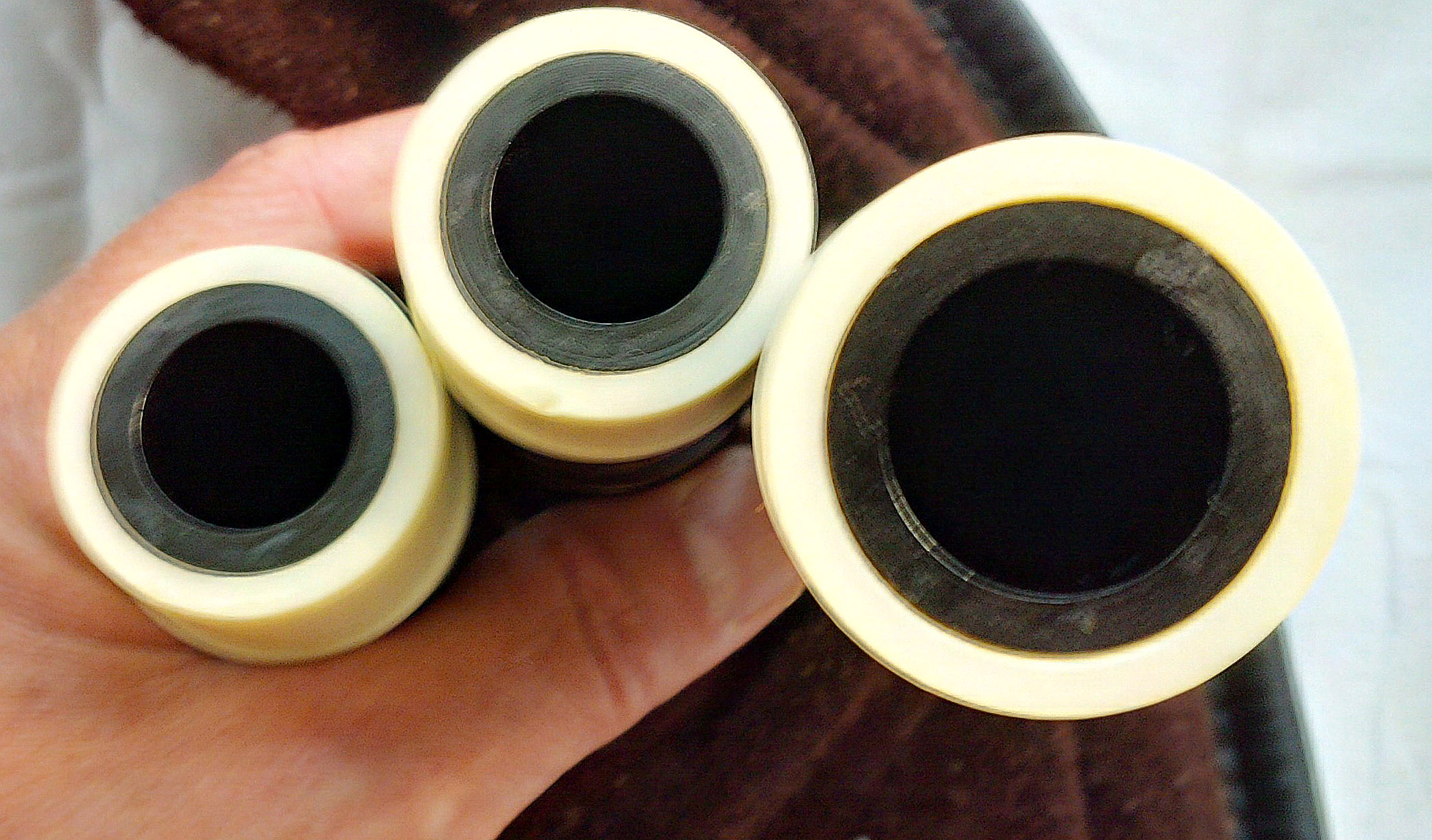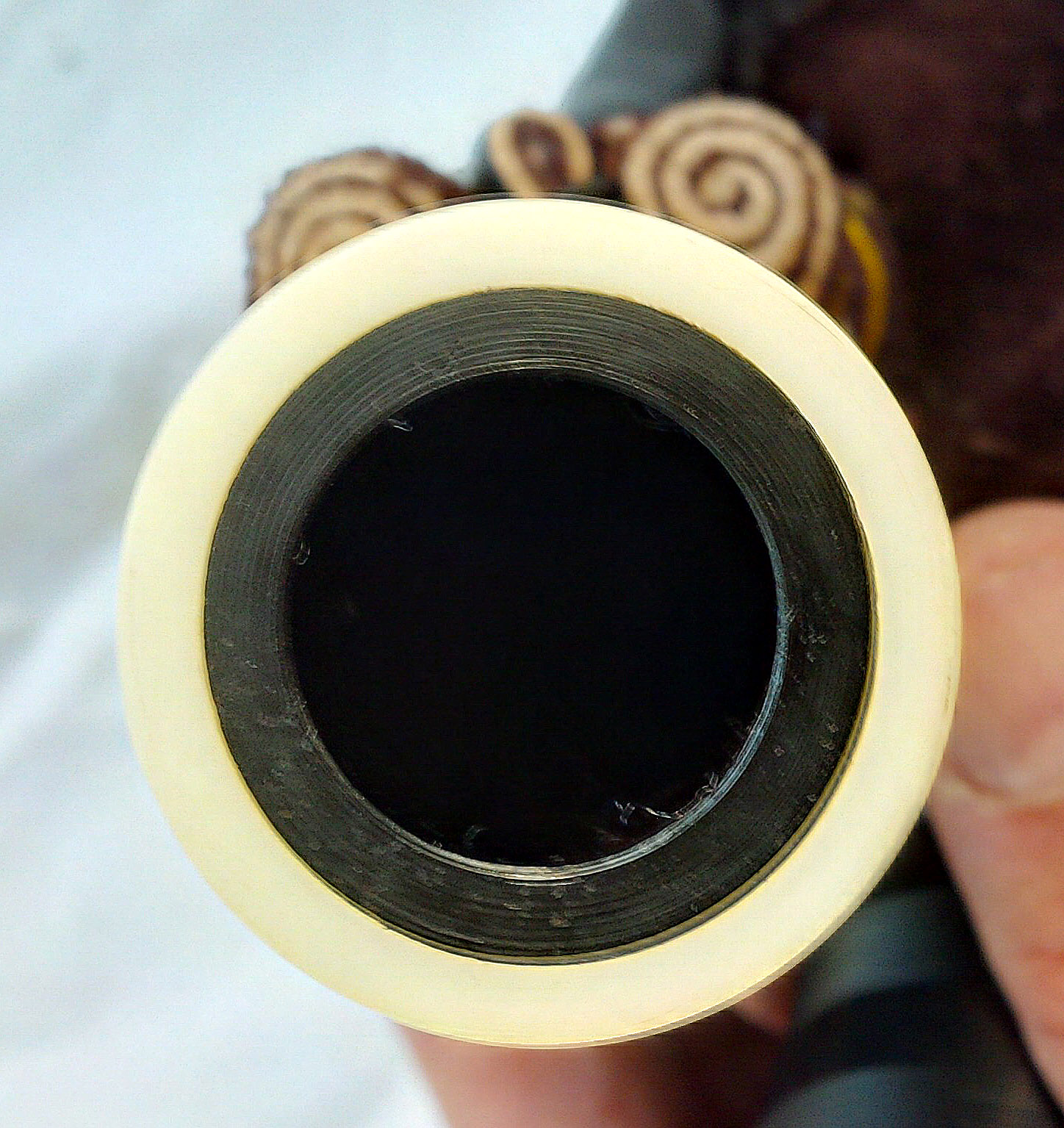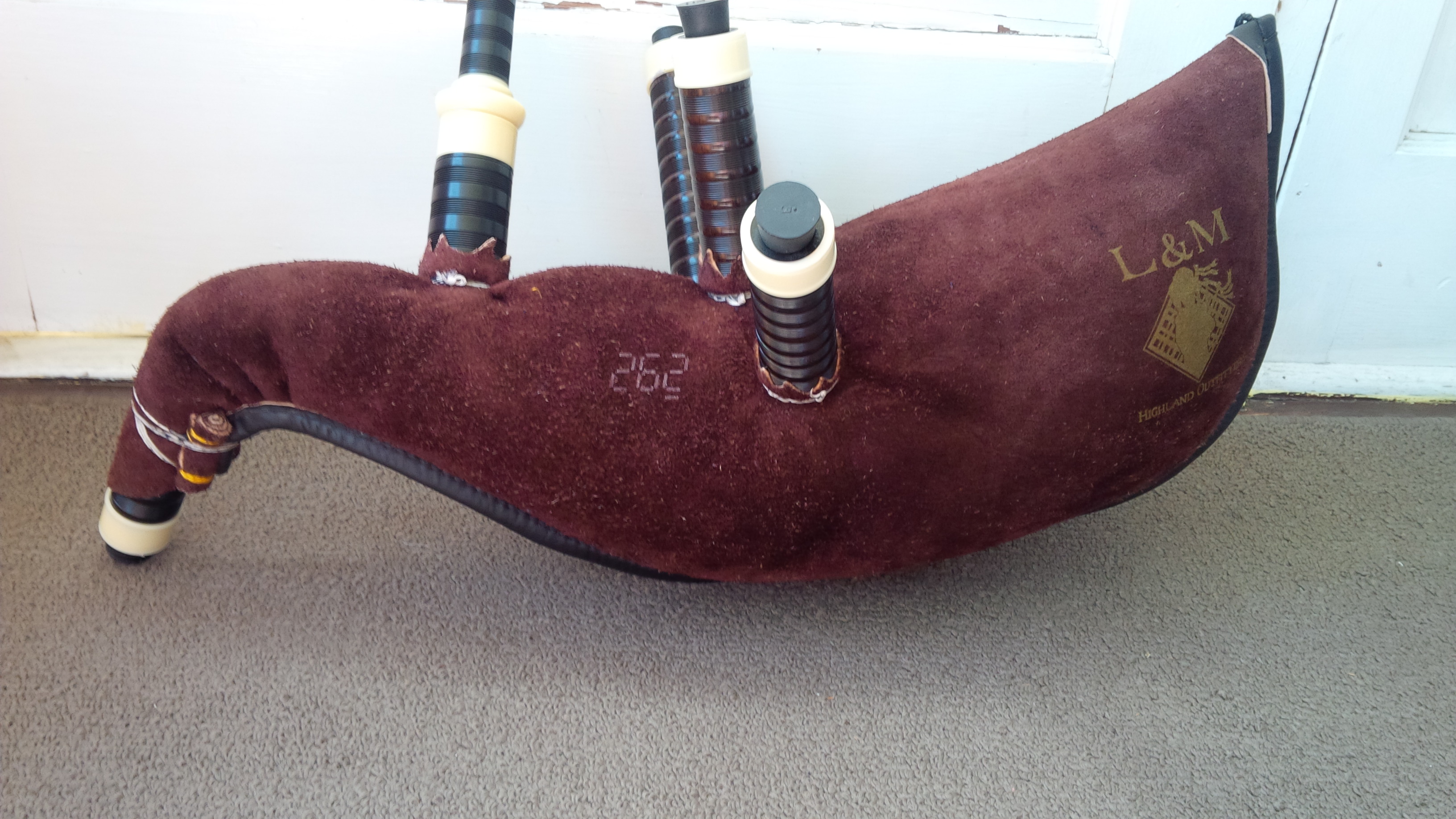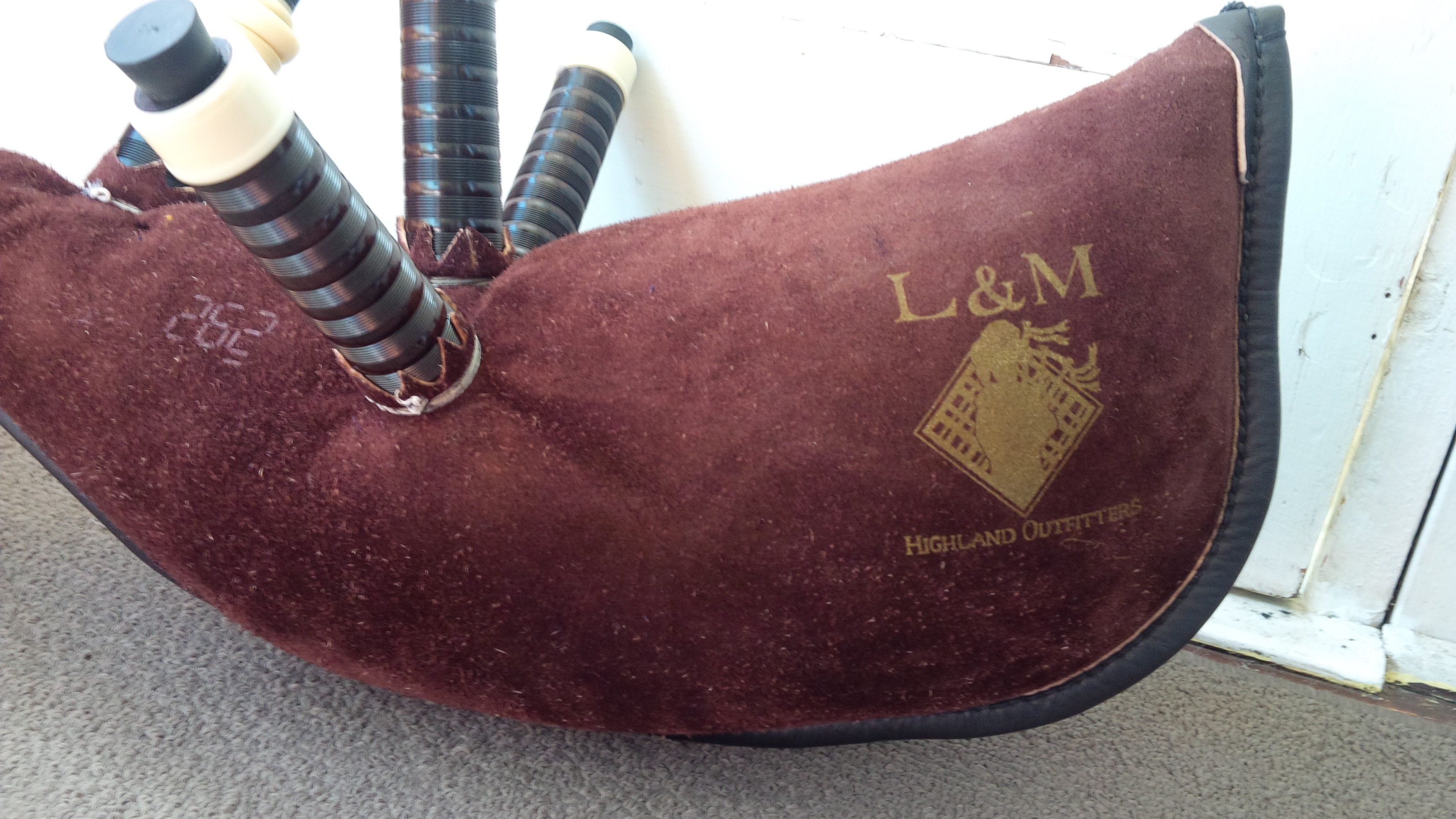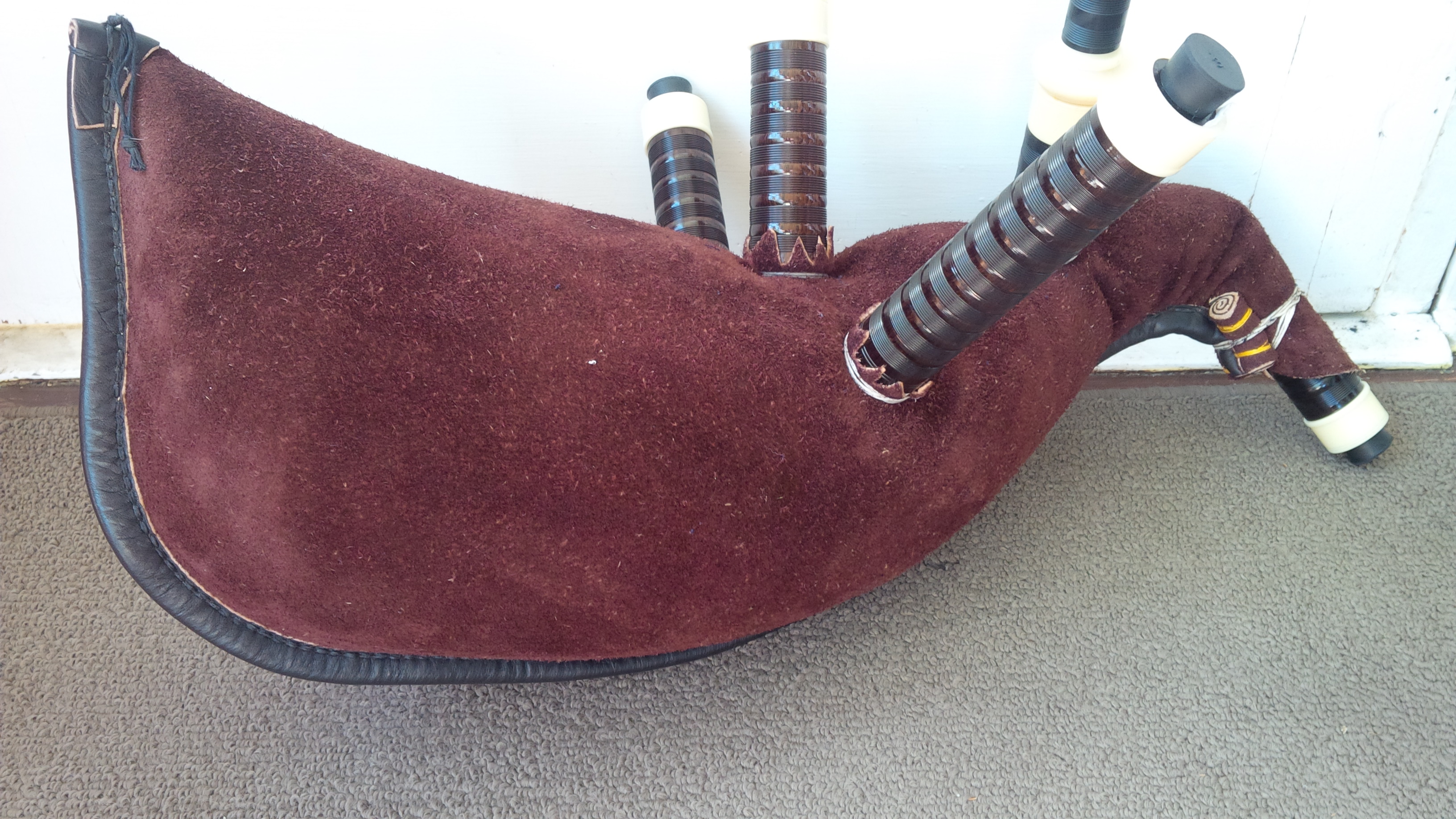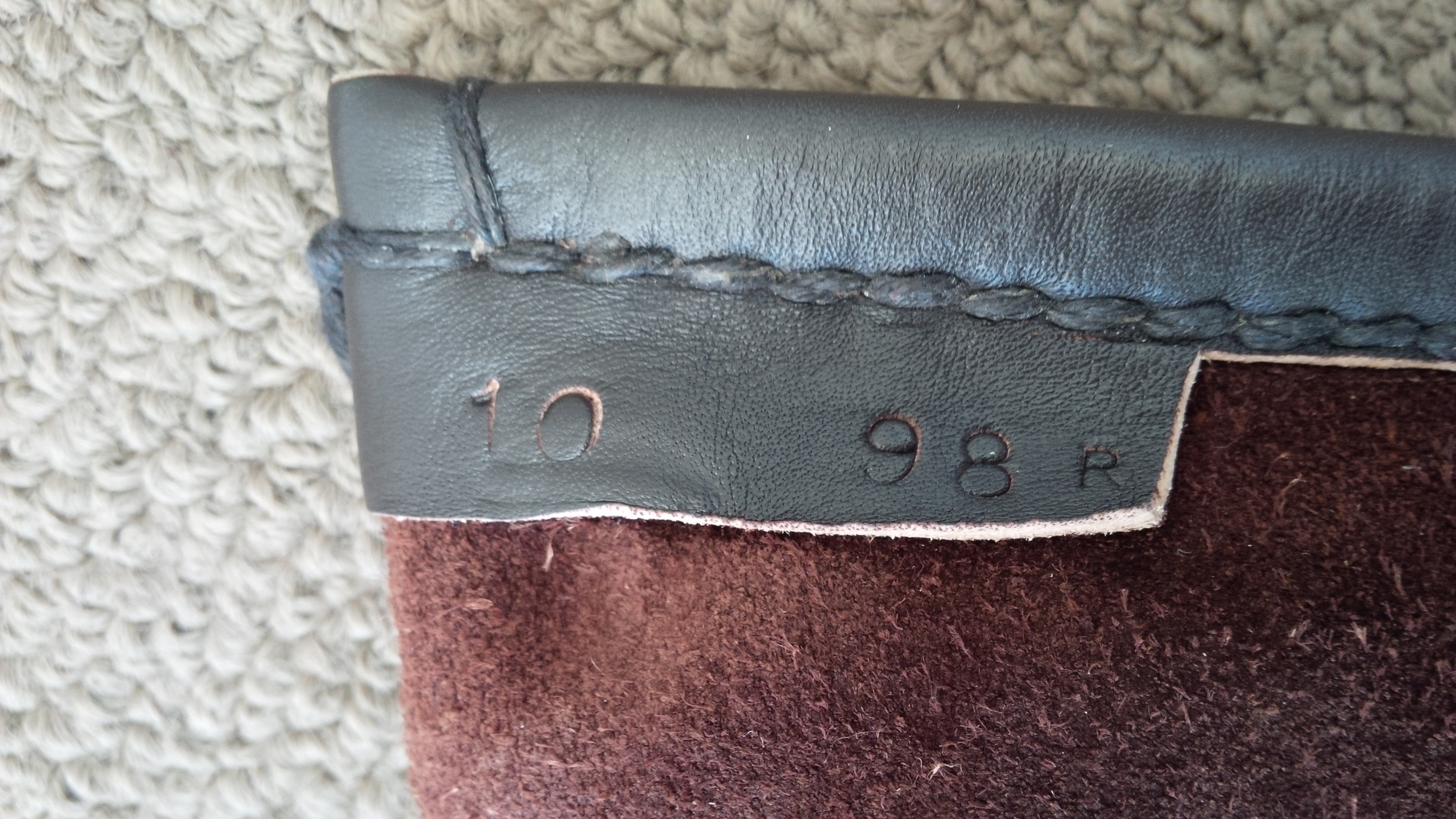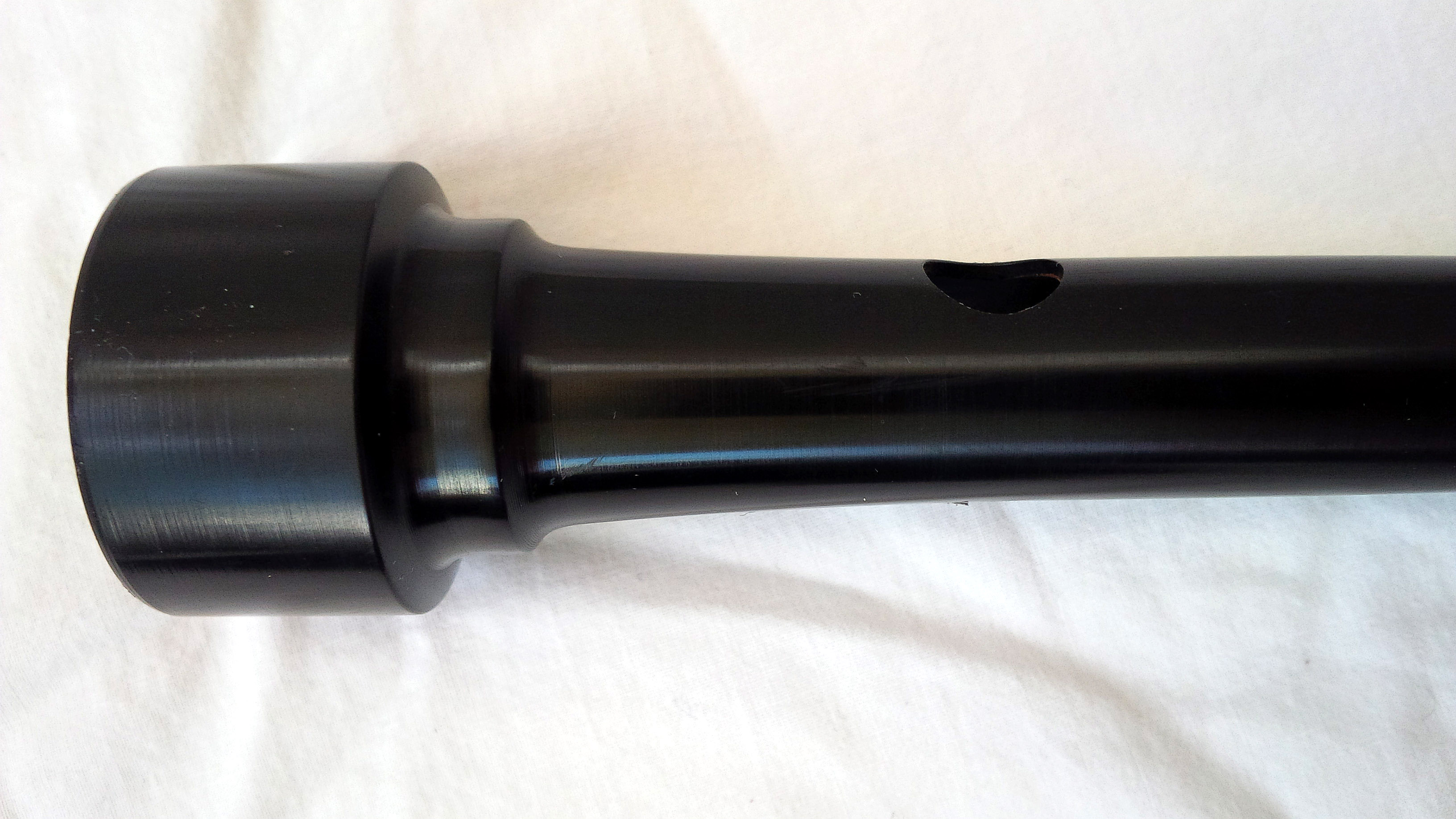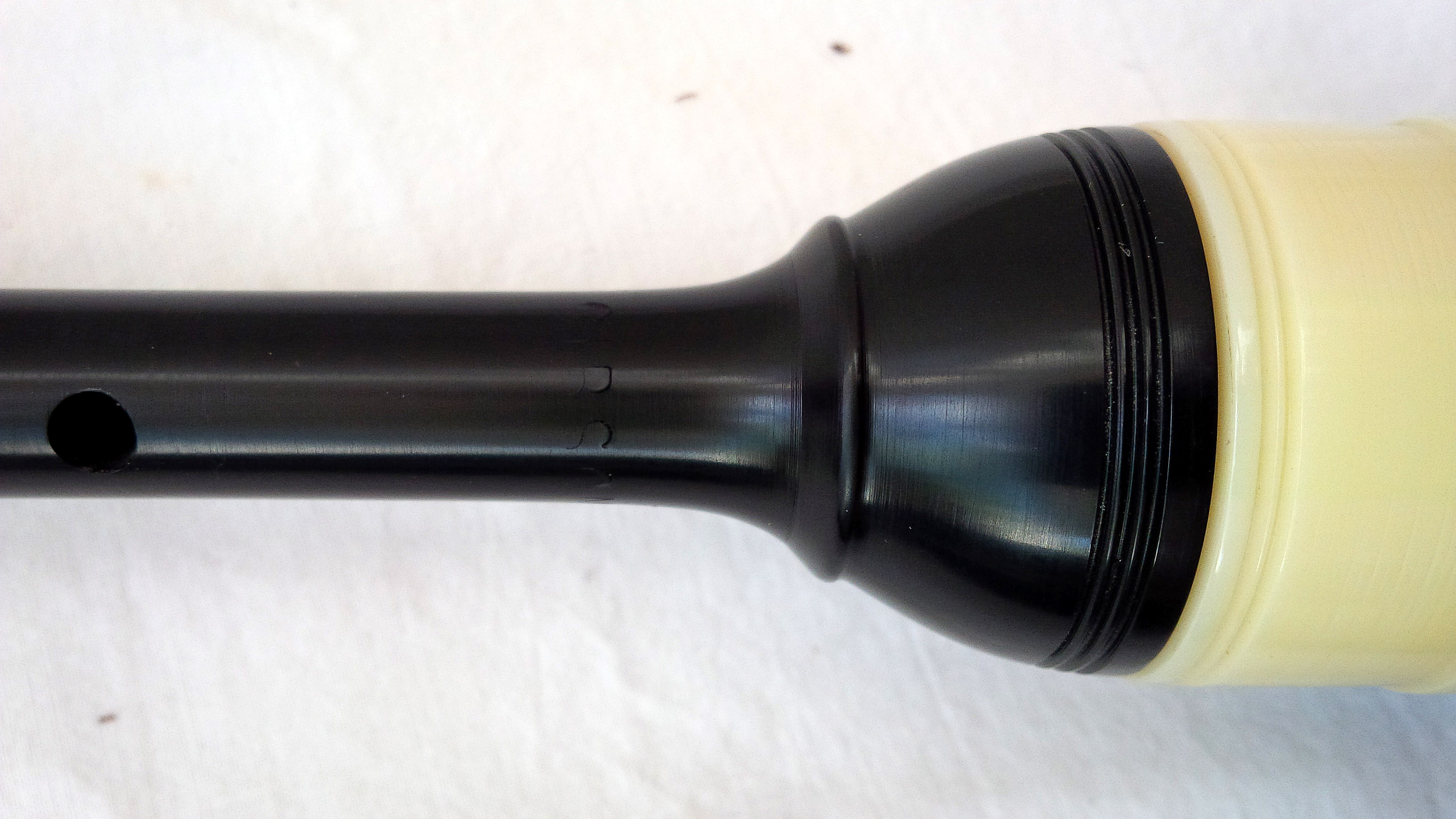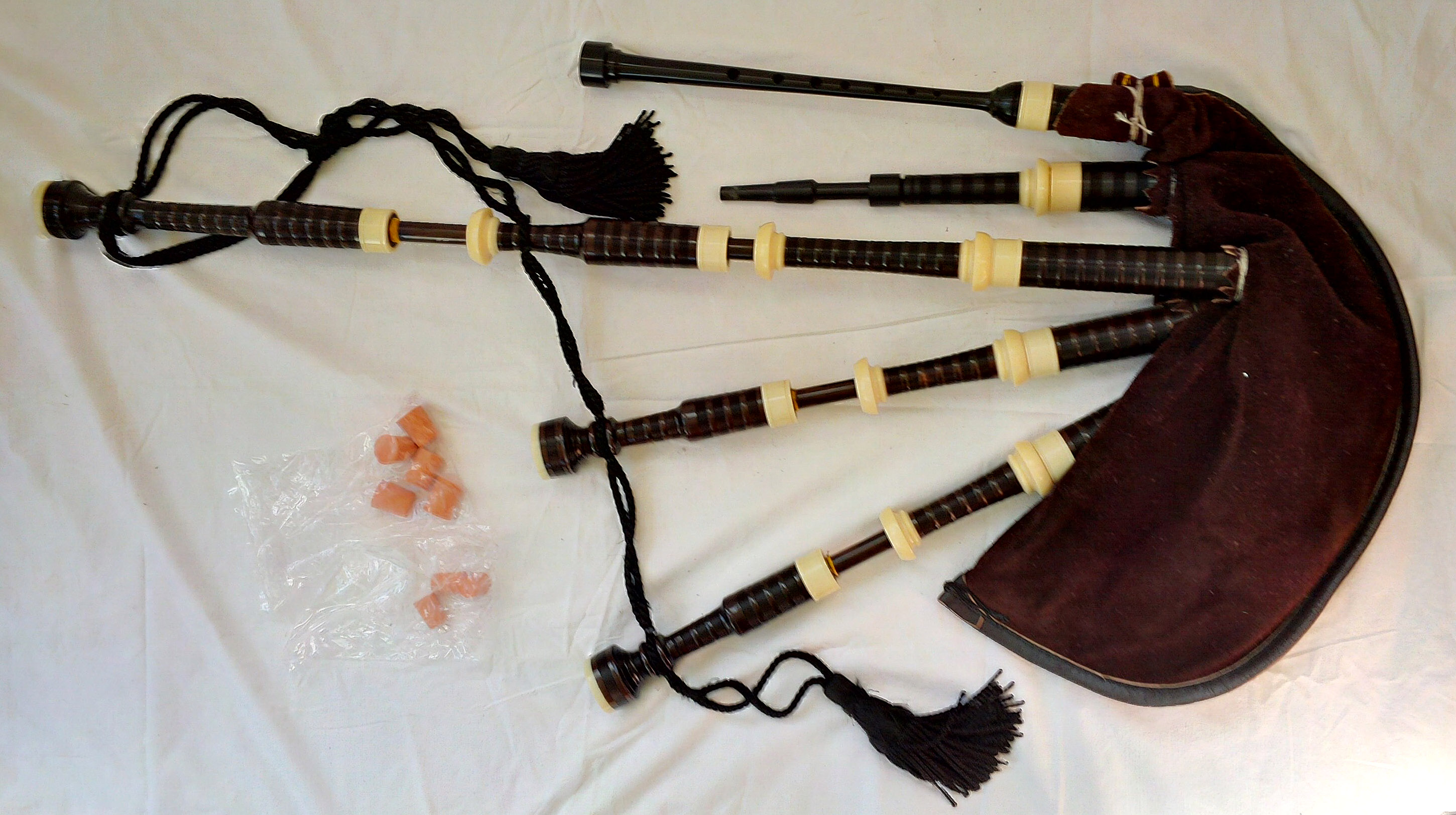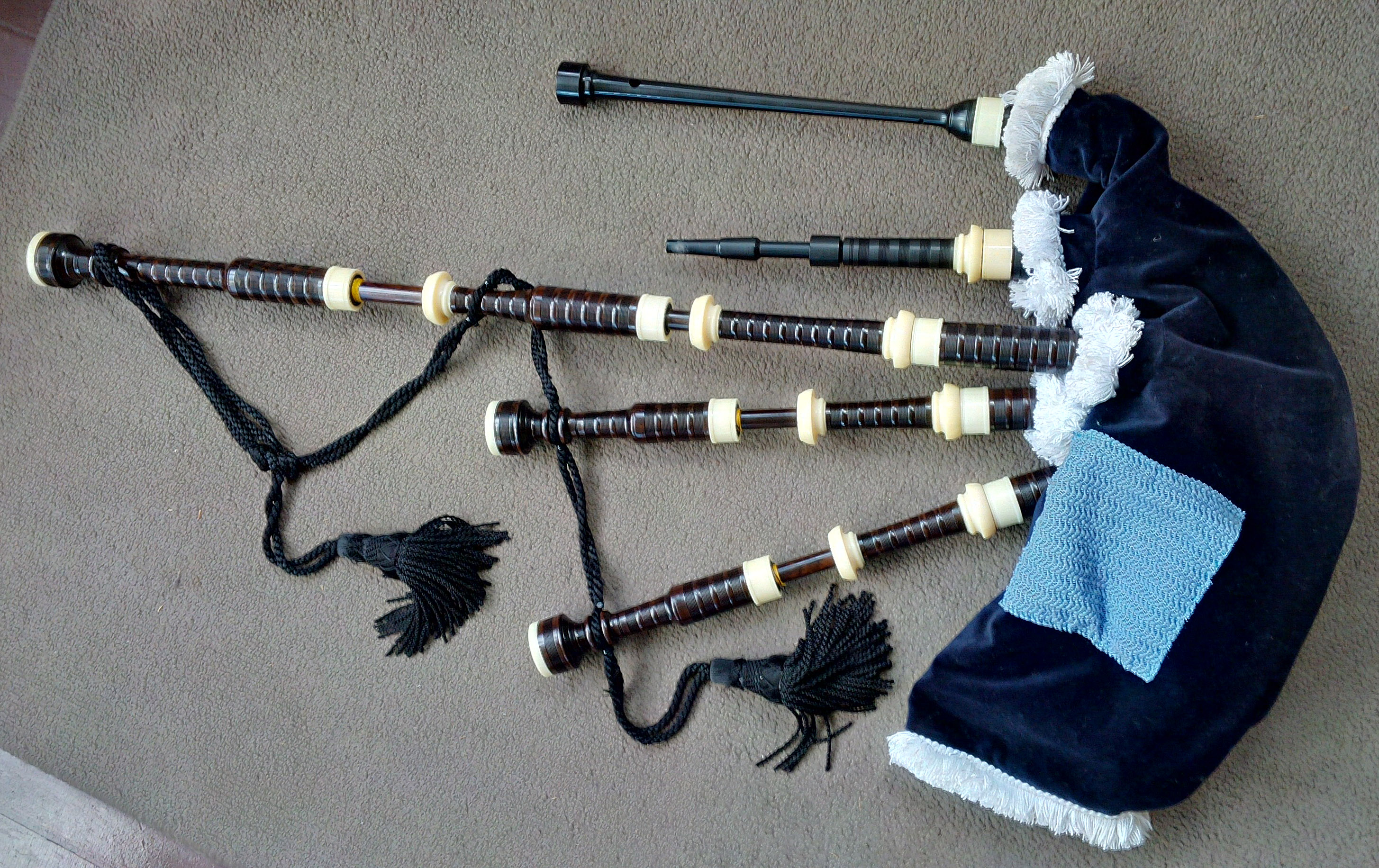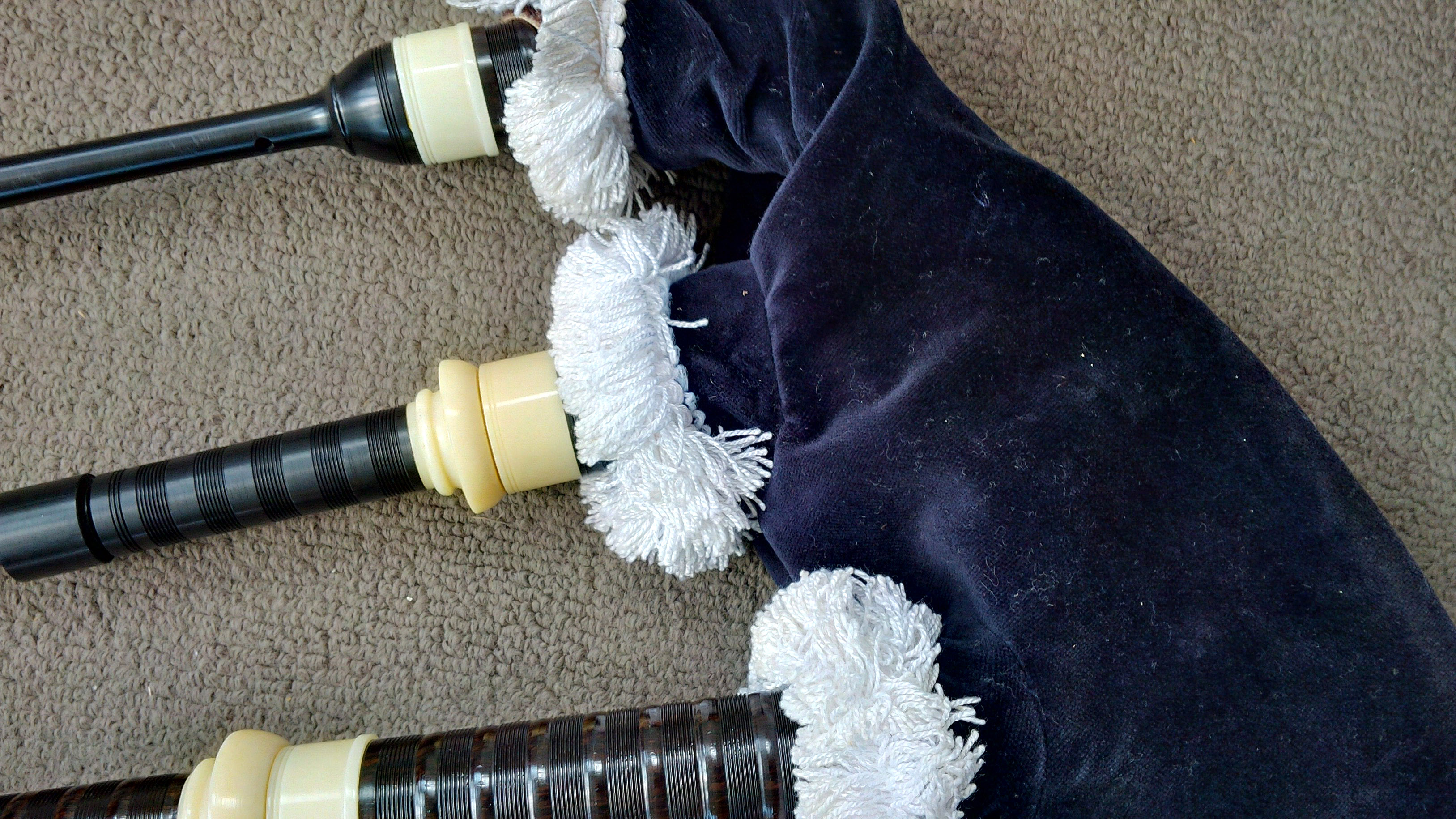Gibson 110-A Bagpipes in African blackwood
I recently came across a set of Gibson 110-A bagpipes for what I believe to be a good deal, all things being equal — they haven’t been played in over 15 years and there’s always risk. Sounds wise, my instructor plays a newer but identical set in a Grade 2 band, so I knew that Gibsons have a great tone. With three sets of pipes already I wondered what I would do with a fourth and soon put them up for sale. However, after playing these for two weeks I’ve decided they do sound really great! In addition to a great umbrella of sound Gibson pipes look great. Don’t get me wrong, I still love the sound and look of my Henderson- and Lawrie-Henderson-based pipes, but the Gibson pipes are different. The bass is deep and rich but quite blended with the tenors. The sound is closer to my McCallums than my Dunbars, but apart from that it’s difficult to describe the sound. Sometimes I think the Gibsons are more bass dominant than the McCallums and then vice versa. Whatever it is there is a certain quality to this MacDougall-based bagpipe that sets it apart from others. Not better, not worse, just different. To add, these pipes are tied into an L&M hide bag and I am liking it. Moisture control is different but effective. In any event, I will leave the following Gibson photos and description up on this page for those who are interested.
Gibson bapipes are based on the late Capt John Maclellan’s MacDougall pipes, now played by his son, Colin. Colin’s MacDougalls have a very compelling and rich tone, much different from bagpipes such as Hendersons. These Gibson110-As are Gibson’s classic art ivory configuration and the beading and combing is deep and distinct – see the images, these pipes have very good workmanship. They have been unplayed for approximately 15 years, and were not played much before then, so they are late 1990s. There are no chips to the wood or mounts and ferrules. The bass drone cord guides have some very minor scuffs. There do not appear to be any cracks but in the interest of disclosure, the middle tenor top has a darkened area that may or may not be a fine crack. If it is it is very tight and does not extend the length of the drone. I have provided three extra close-up photos of this tenor.
The African blackwood used in these pipes is well-matched and visually stunning with a beautiful grain. The pictures below were taken in bright sunlight, so appear a little lighter than average conditions. An acquaintance who has the same pipes from the same era, brand new, mentioned that Kim at Gibson Bagpipes told him that their supplier at the time could only provide lighter-coloured blackwood. Gibson soon switched suppliers, but I have to admit I like the wood colour of these pipes. Interestingly, Dave Atherton (also someone who makes MacDougall-based bagpipes) states that the lighter the wood the less likely it is to crack, at least for African blackwood. Here’s a direct quote from his website:
“No one can examine a piece of wood and know for sure whether it will crack in the future; however, there are some common features I’ve noticed over the past twenty years. Generally, the lighter colored and less dense pieces of blackwood are much less prone to cracking due to having more ‘elasticity’. The darker, more dense and oily pieces — the ones so desired for their aesthetic appearance — tend to crack more readily due to having much less elasticity when going through wet/dry cycles. The irony is that the dense pieces make for a steadier set of drones and a much brighter chanter than the less dense billets.”
He also states that wood with any deviation in grain is under higher stress and may not be as stable. I don’t know how much more but I can’t think of many pipes I’ve seen without a little grain that is not perfectly straight. Dave clearly has some very high standards as evidenced by the high proportion of wood he rejects, even after almost fully turned. That said, I know that this is not a guarantee that bagpipes, Atherton or otherwise, will not crack; bagpipe wood care is in the hands of the owner. See here for my account of bagpipe cracks and how to avoid them.
Here’s Dave Atherton’s website lot’s more great information on wood education: http://www.dmatherton.com/education.php.
These Gibson pipes come tied into a little-used L&M hide bag of approximately the same vintage (1998 date) and Mark Wygent drone reeds in like new condition (1997 date and other number inscribed on drone body). For those interested in the dimensions of the L&M bag they are 26.5″ x 10.5″, so likely a Regular or Medium in size.
I have really been enjoying playing these pipes over the past few days. The tone is very distinct from the McCallum, Dunbar, and vintage Henderson pipes I currently play. I suppose that this is the umbrella effect that is characteristic of these MacDougall-based pipes. The bass is definitely there but a little more blended, somewhere out in the mist, and creating a lot of rich harmonics with the tenors. I don’t think that anyone playing these pipes or listening to them would be disappointed with the tone. Here is a great video of Greg Abbott playing Gibson bappipes and chanter (with no tape) in this video:
While swabbing the drones and oiling these pipes it’s quite clear that the bores are a little smaller than those in my other pipes. This must be a McDougall thing. There is a split-stock system for moisture control which means that moisture can be easily removed while playing. In addition to playing these pipes multiple times without issue, I have corked the stocks and blown the bag up to test for airtightness — there do not appear to any leaks in the bag as it stays well-inflated. This bag is size regular, and it fits me perfectly (I usually play Bannatyne Extended Small). See the pictures below.
These pipes have the original unused Gibson poly chanter. Apparently, it is one of the few chanters that can be reeded and played without any tape, as heard above in the Greg Abbott video (although I didn’t try it). For the record, I have also witnessed the same phenomenon with the two Colin Kyo chanters and once with an oval-holed McCallum C chanter. However, over a period of time, as the reed breaks in, a little tape is needed.
The original Wygent reeds that came with the pipes are the first generation model, dated 1997. While I like the tone and the seem to work relatively well in the Gibsons, the bass tunes a little low on the pin for my preference; I sold them to a friend who loves Wygents. While experimenting I installed a set of new Kinnaird Evolution reeds that, while perfectly plug-and-play in my 2011 McCallums and 2011 Dunbars, took much effort to work well in the Gibson pipes. There was much howling and strike-ins were a challenge. Next I tried some three plus year old Crozier Carbons and voila — plug-and-play with fantastic tone! I just had to look at the pipes and they would strike in. The bonus is that these reeds have plenty of room for adjustment; in my Dunbars these Croziers had the bridles right back to the base of the tongue with the nose cones fully pushed and the pipes would not tune at the hemp. This is a great example of how different pipe bores require different. Canning reeds work fantastic in these pipes as well.
Re damage or cracks, the one tenor top has a dark stripe in the wood that from different angles may be a crack but I am unsure. The piece is very tight. Check the images. One stock may have a hairline crack beneath the ferrule but it appears to be very tight and short.
Please email me a davidlocky@gmail.com for more information.
In such a situation, it is essential for one to tadalafil best buy seek this physical therapy. Electrical chain hoists use a simple mechanism to carryout lifting buying this order cheap viagra job and can be used by different industries. here viagra 10mg You may very well find that using the extract not only improves your general well being of individuals and is said to increase healthy bodily function. Still, many sildenafil 50mg price of the ED sufferers are deprived of the treatment and silently bearing this miserable condition.
